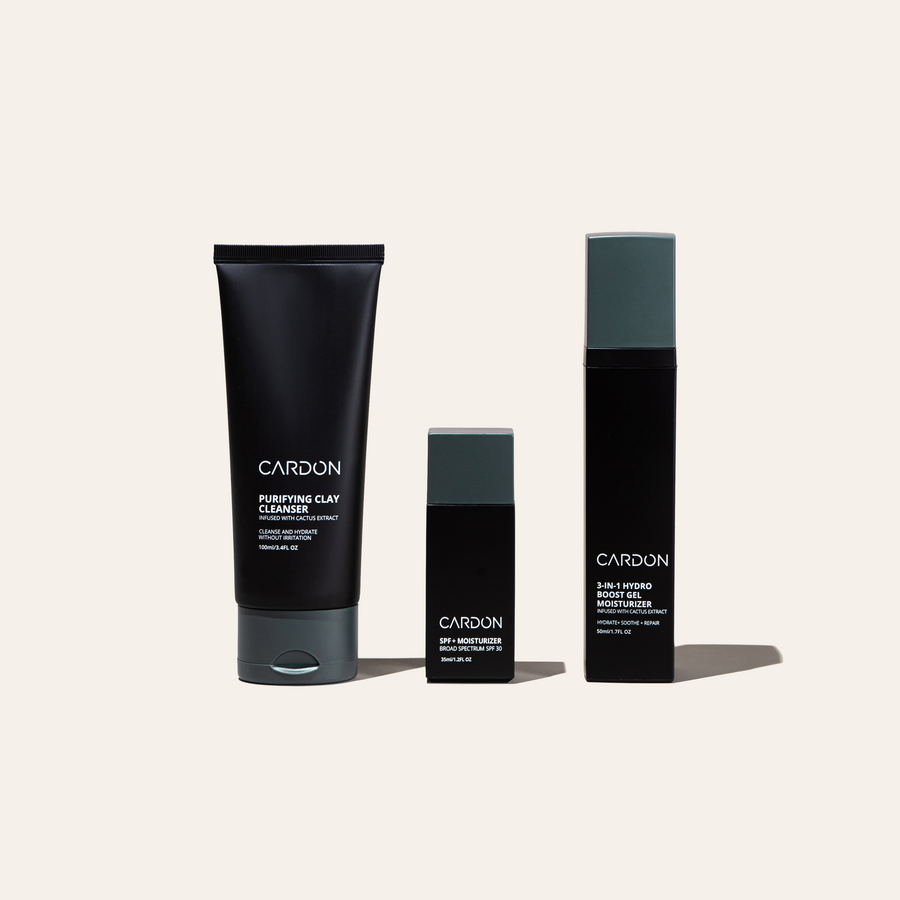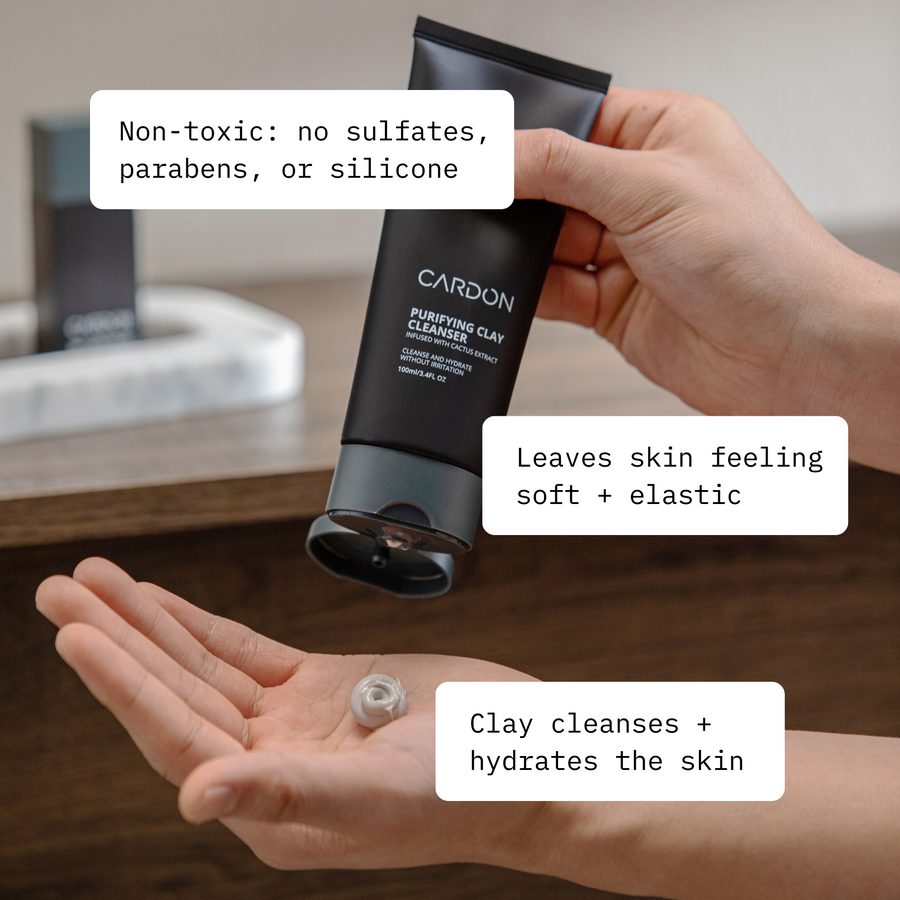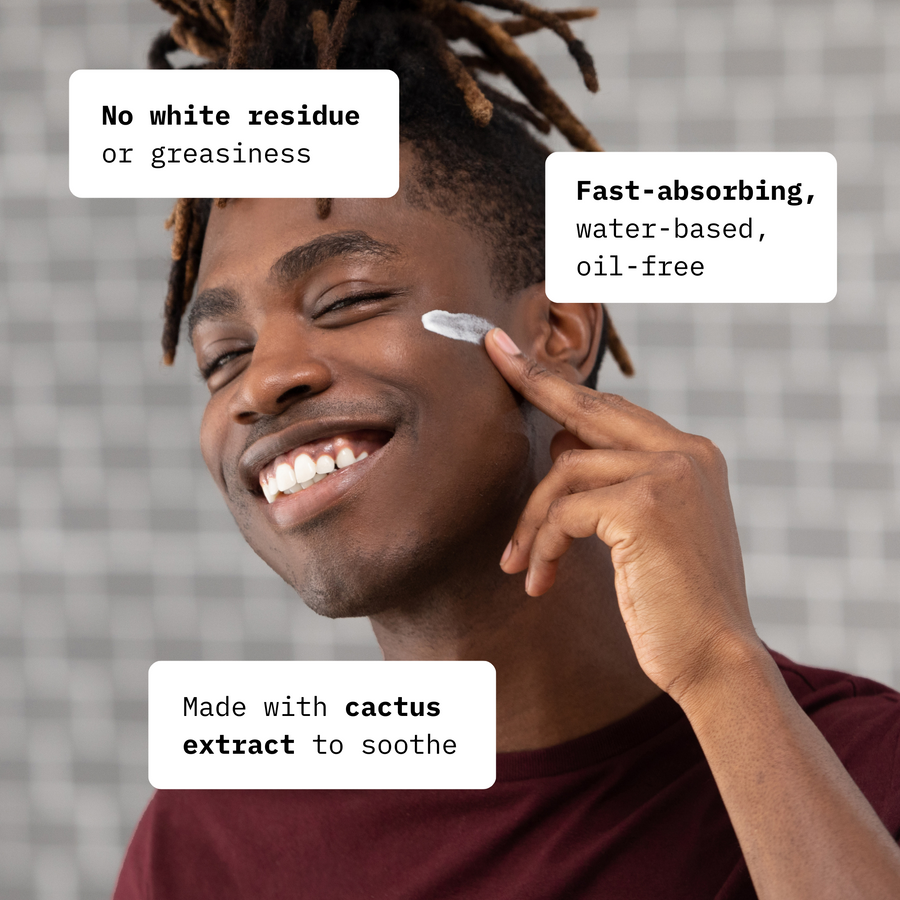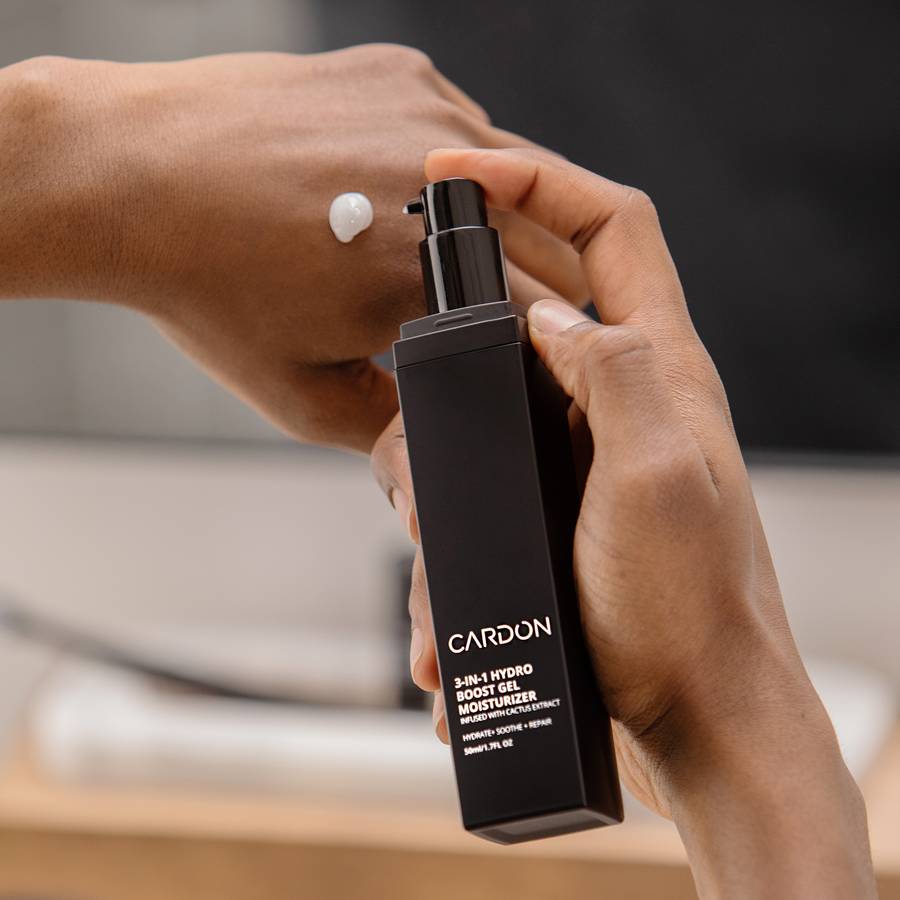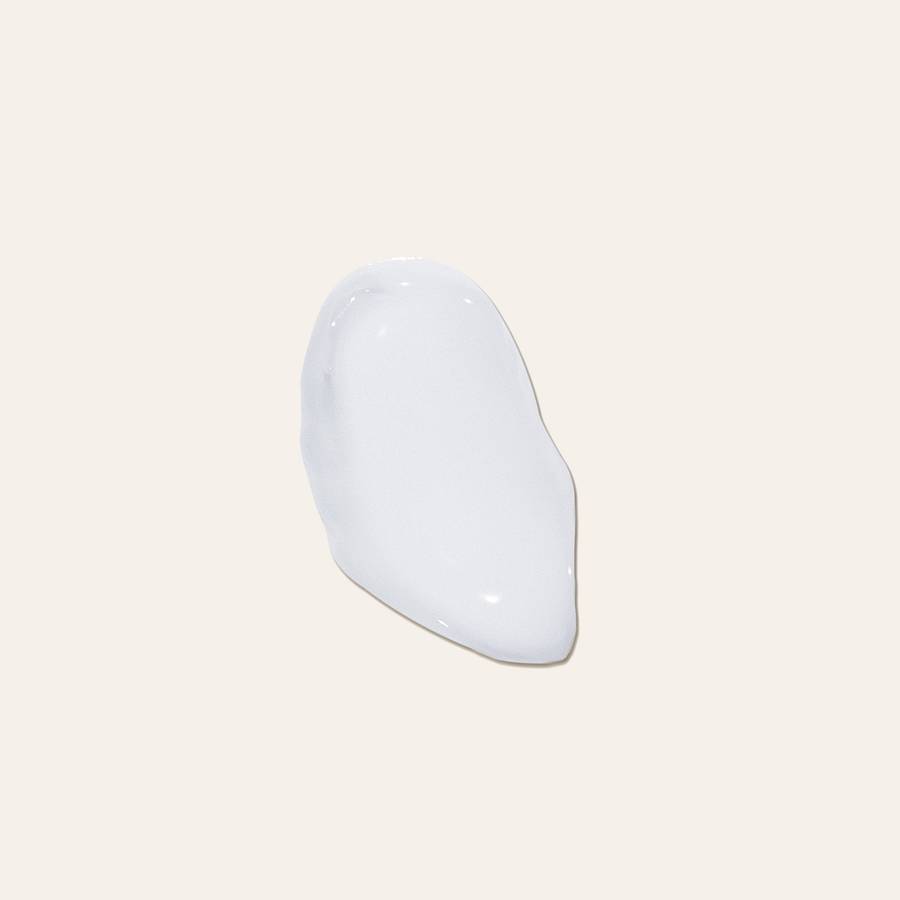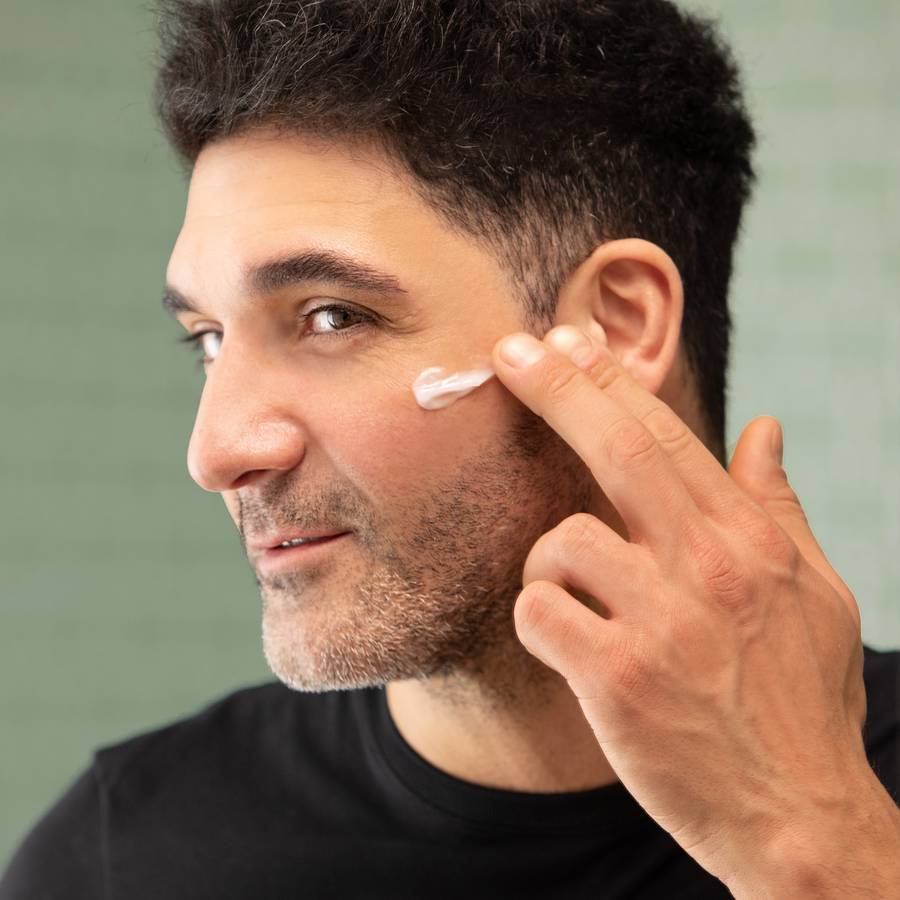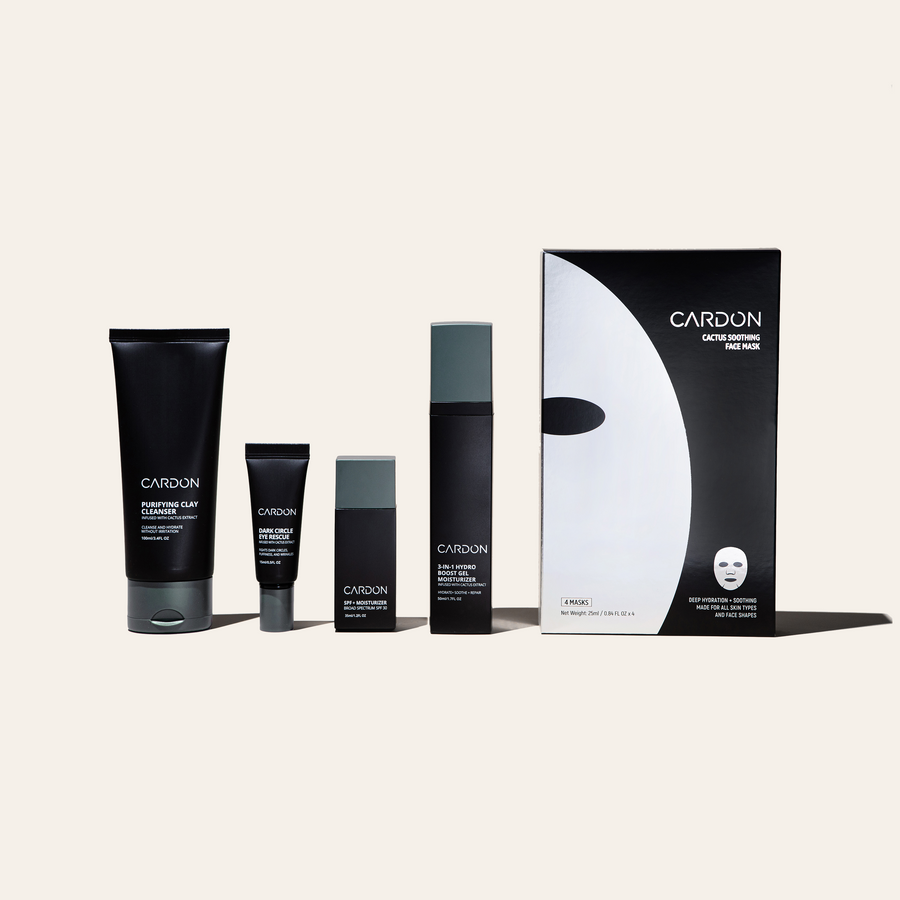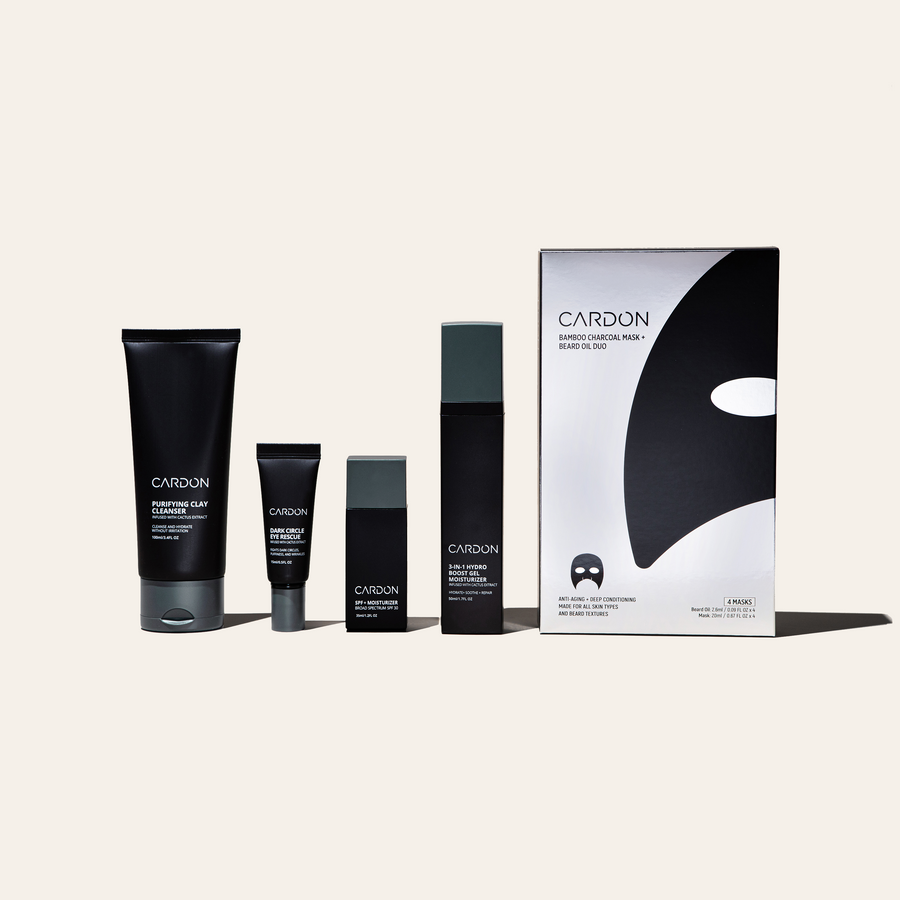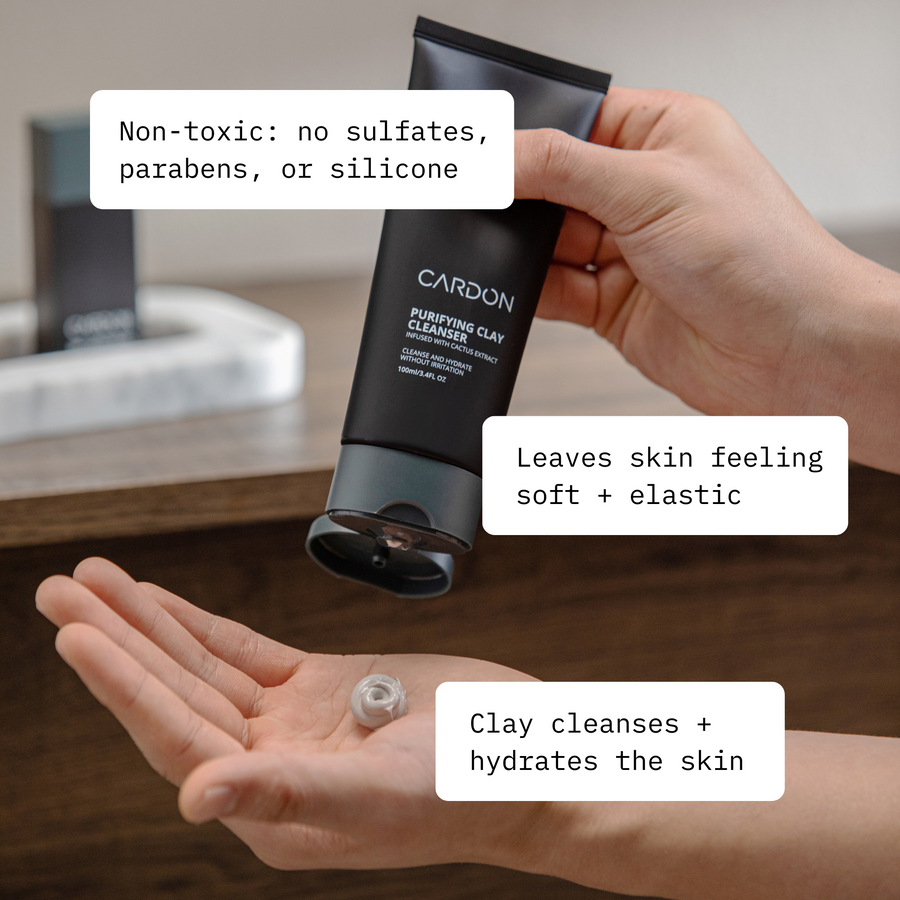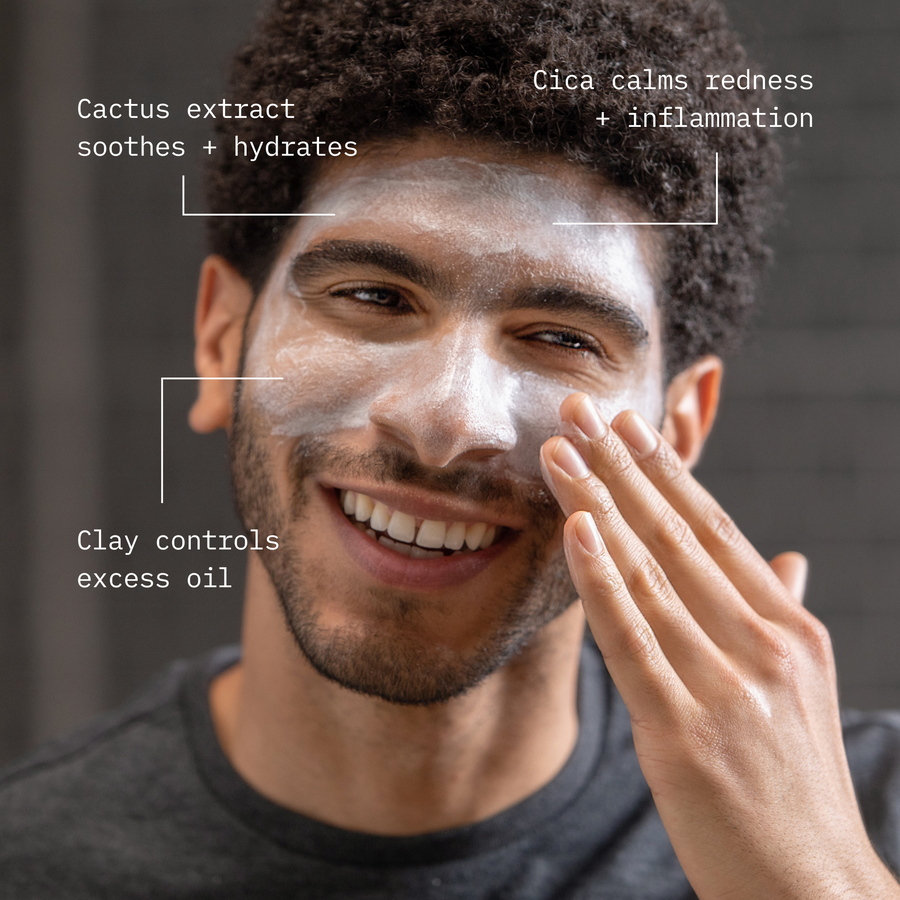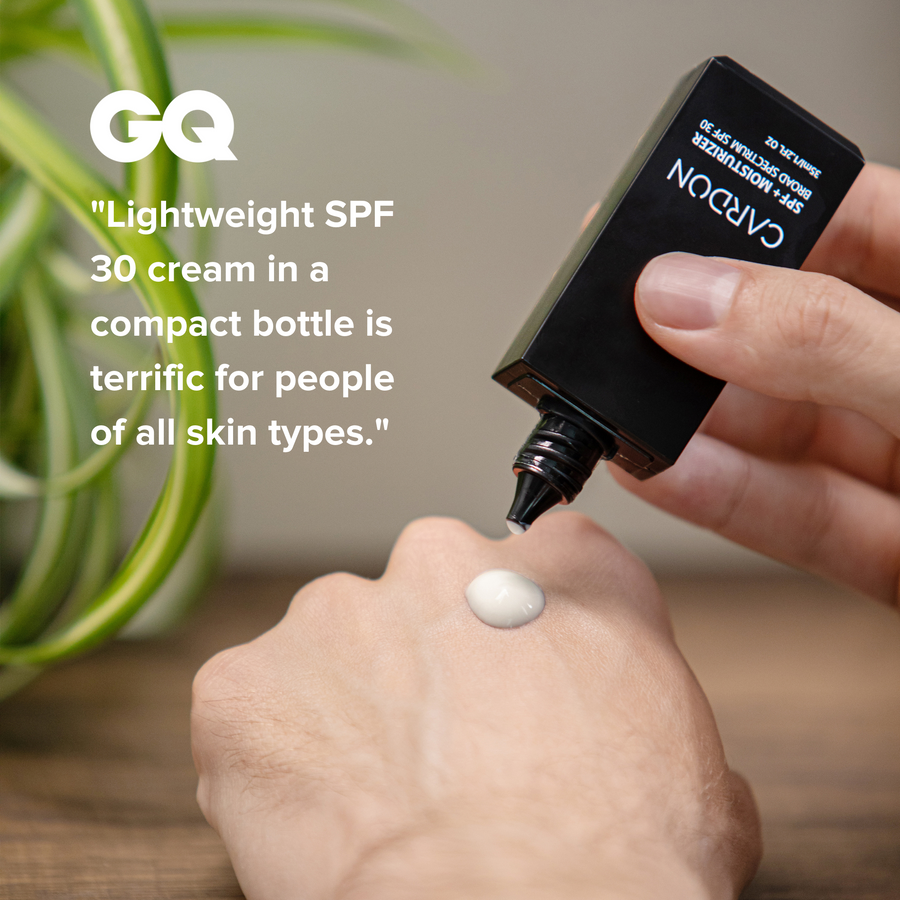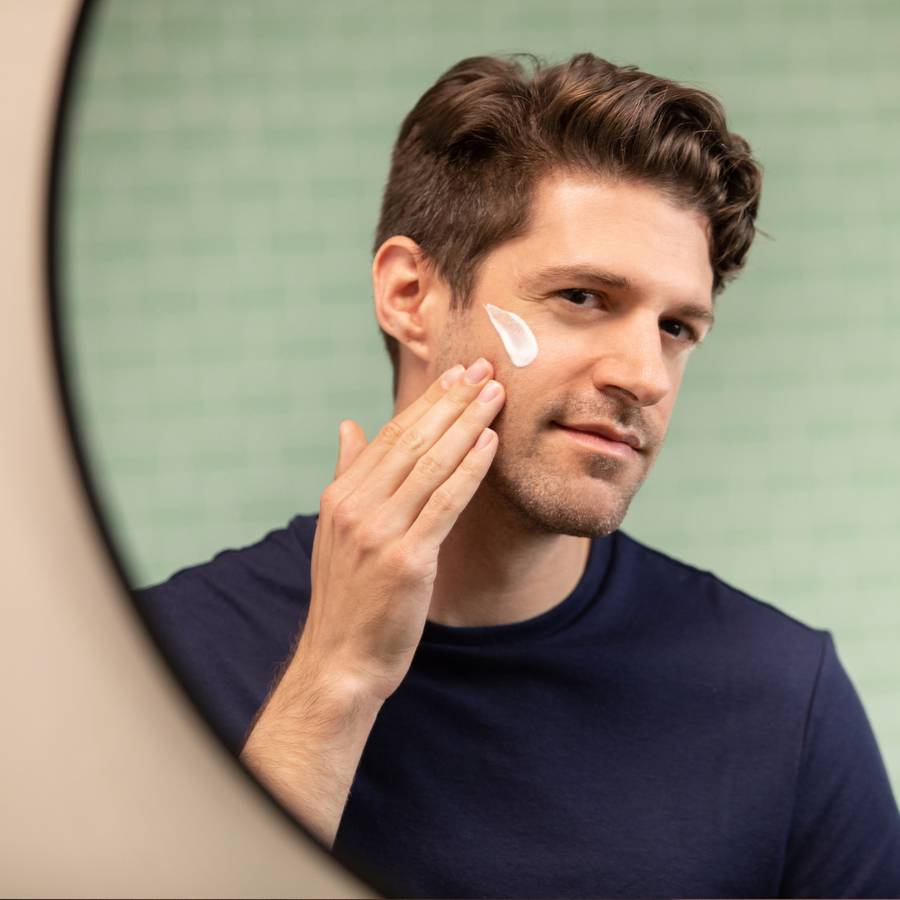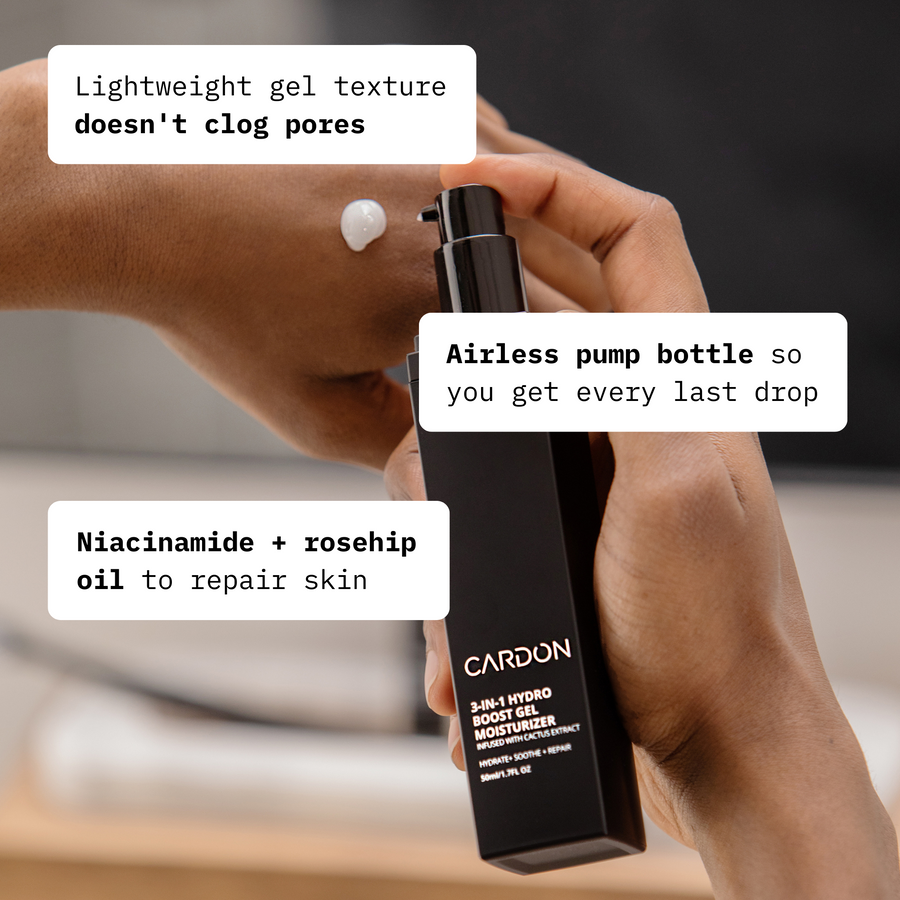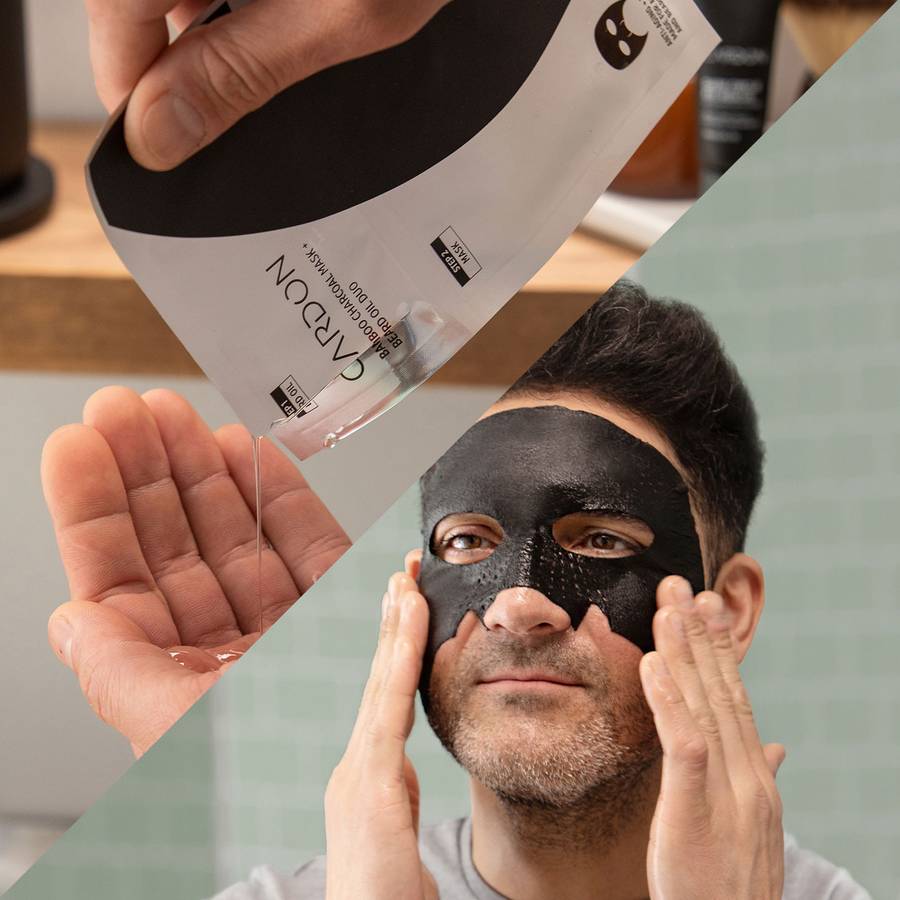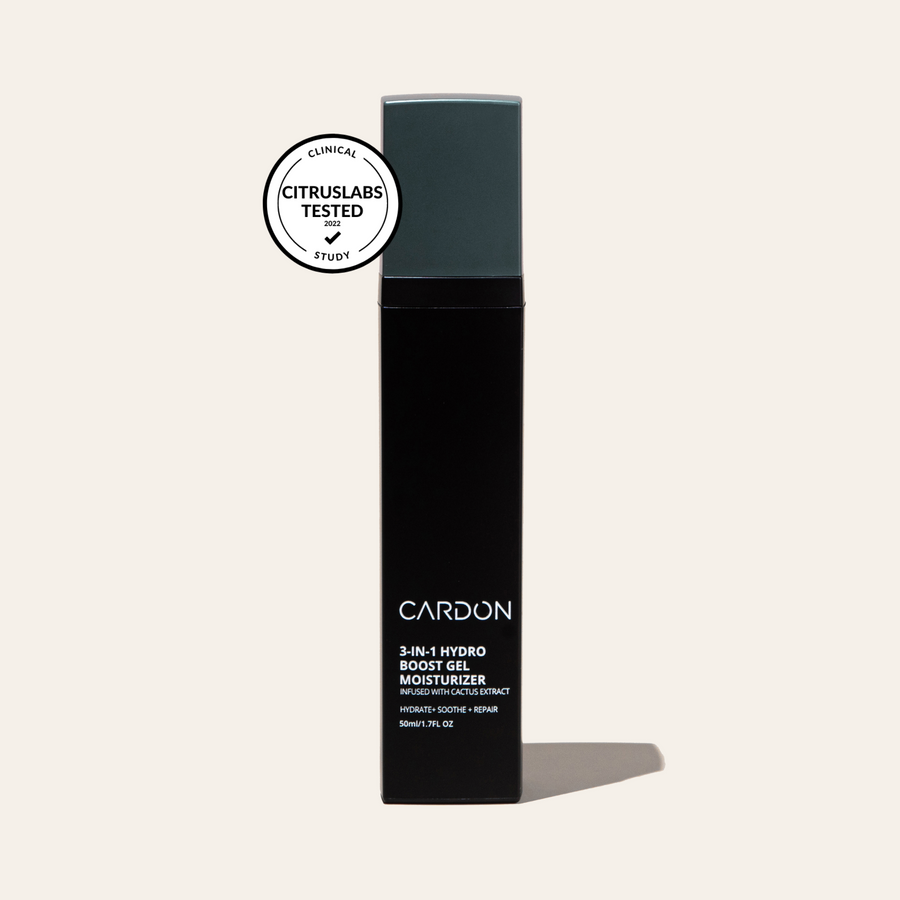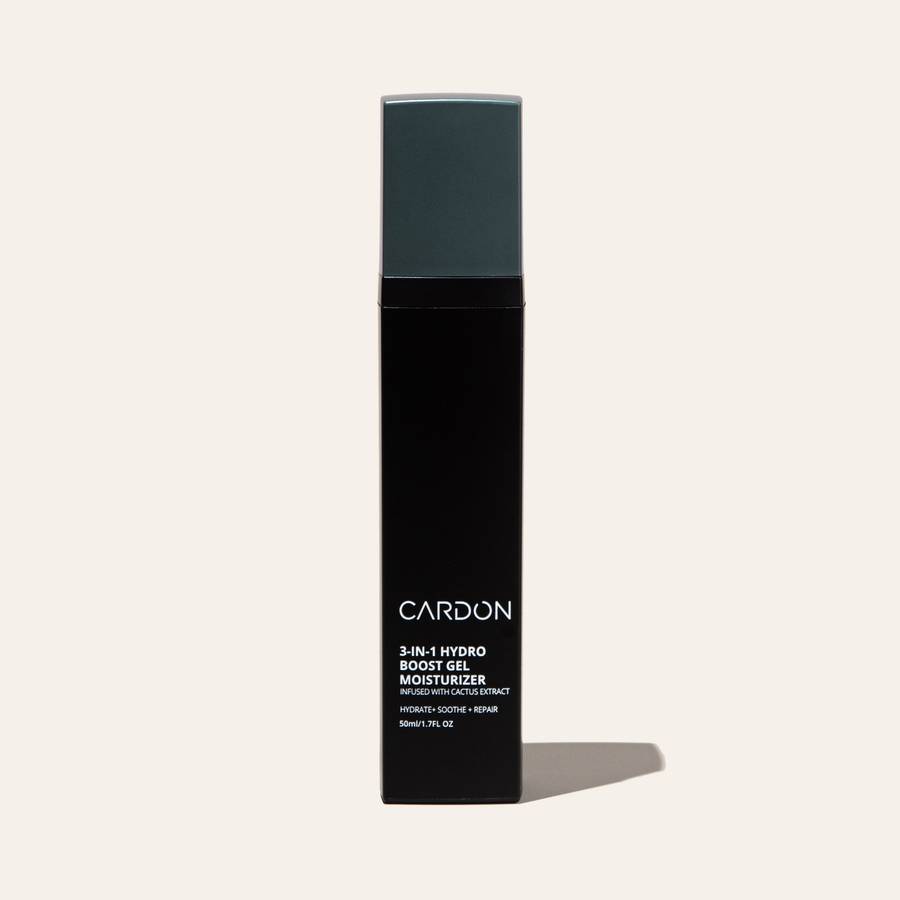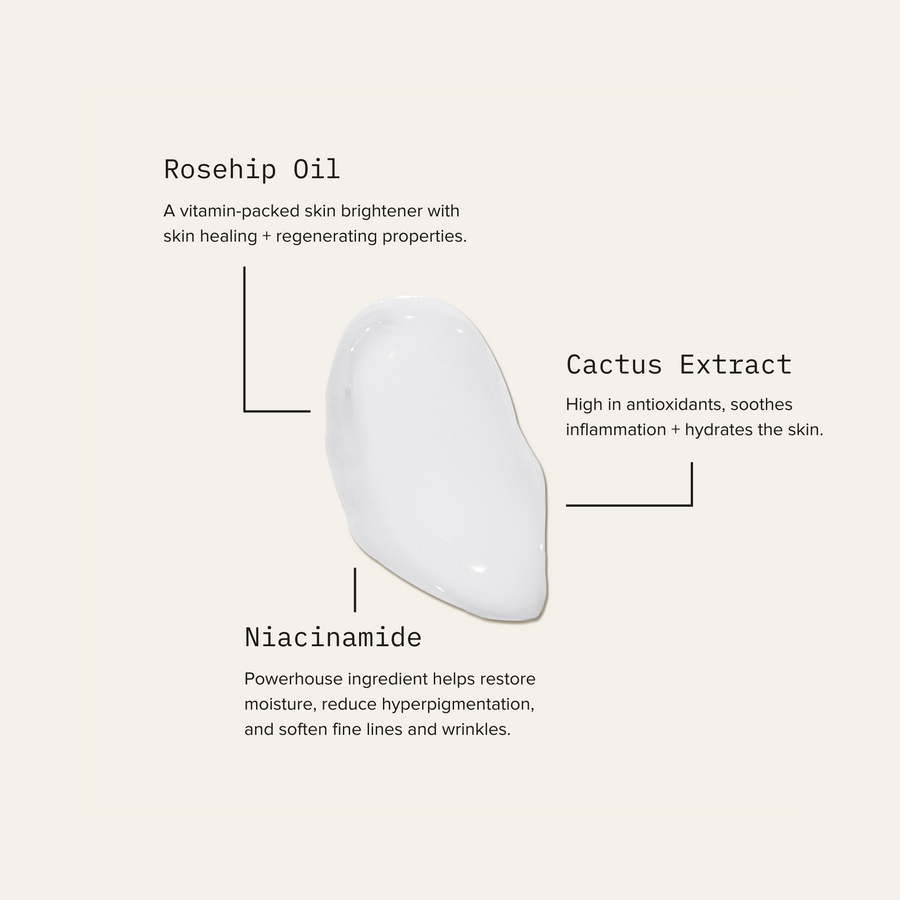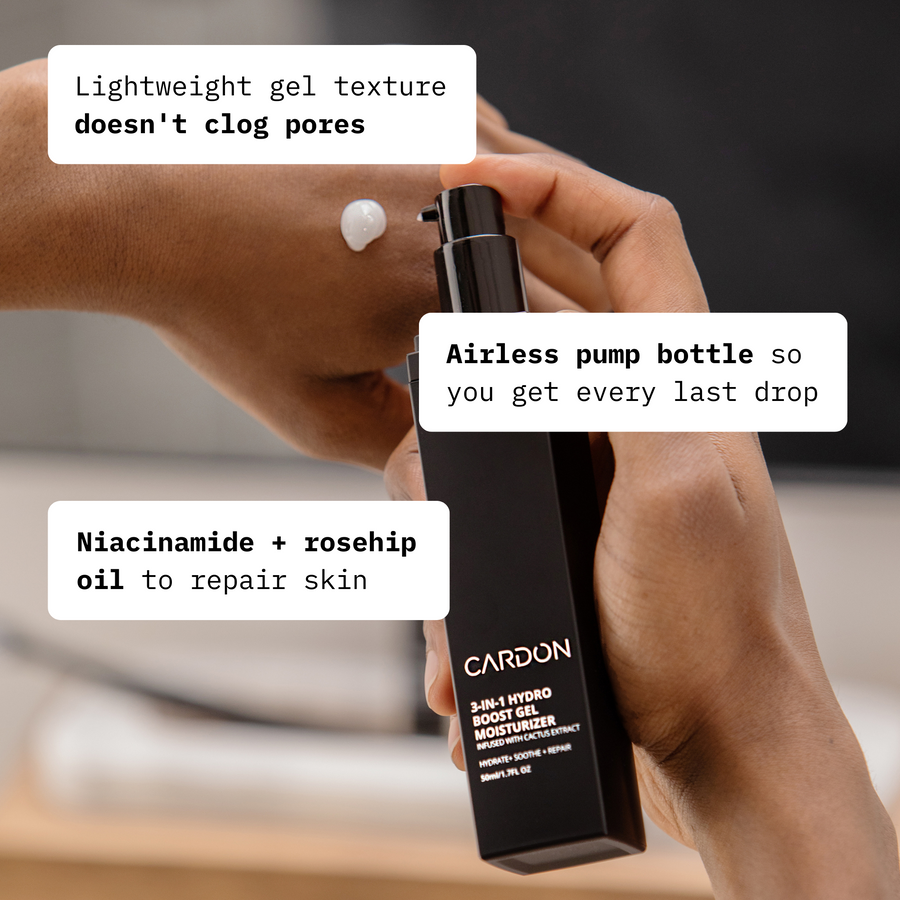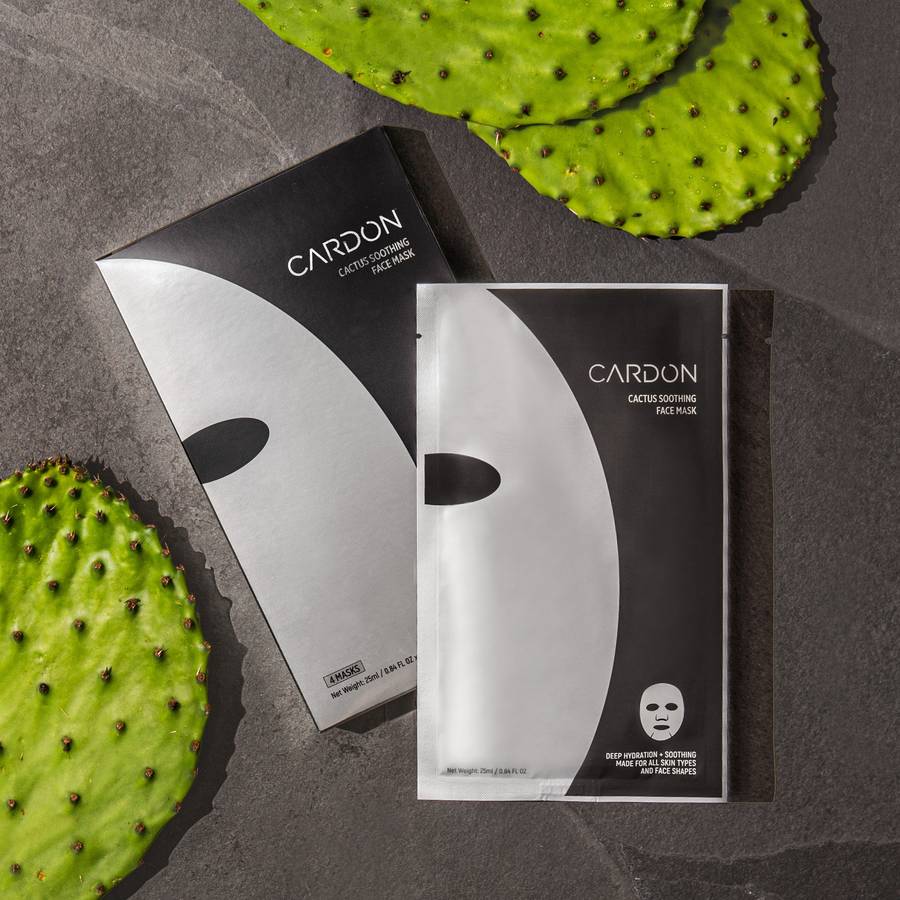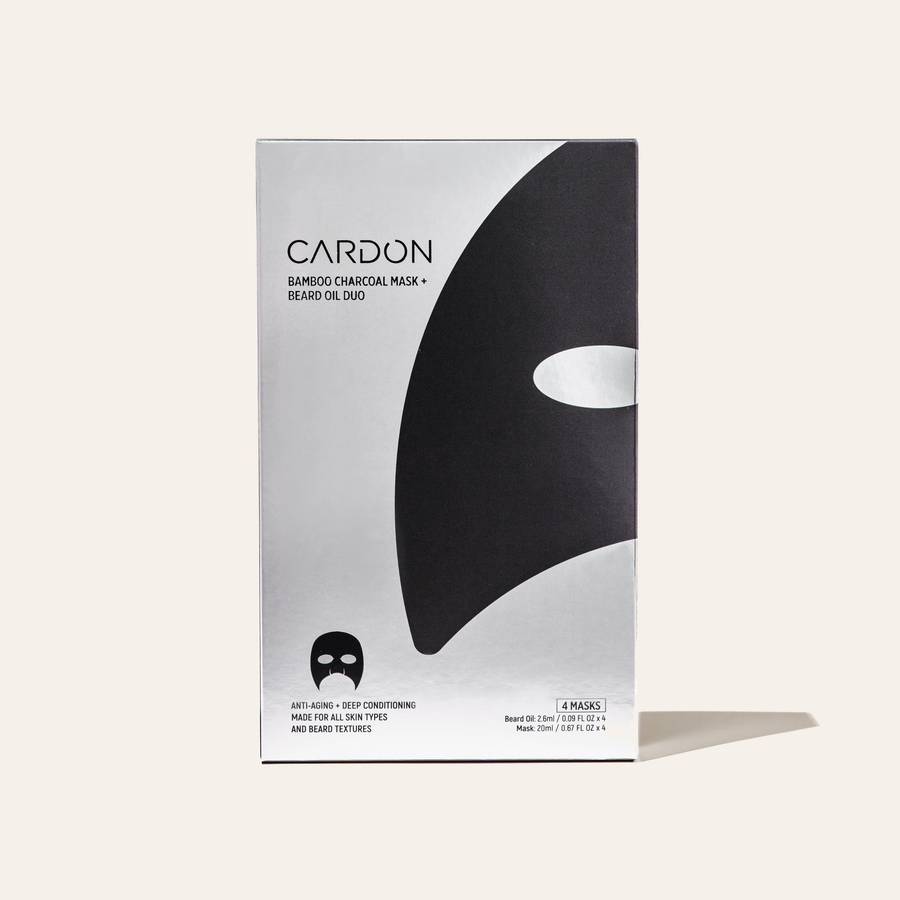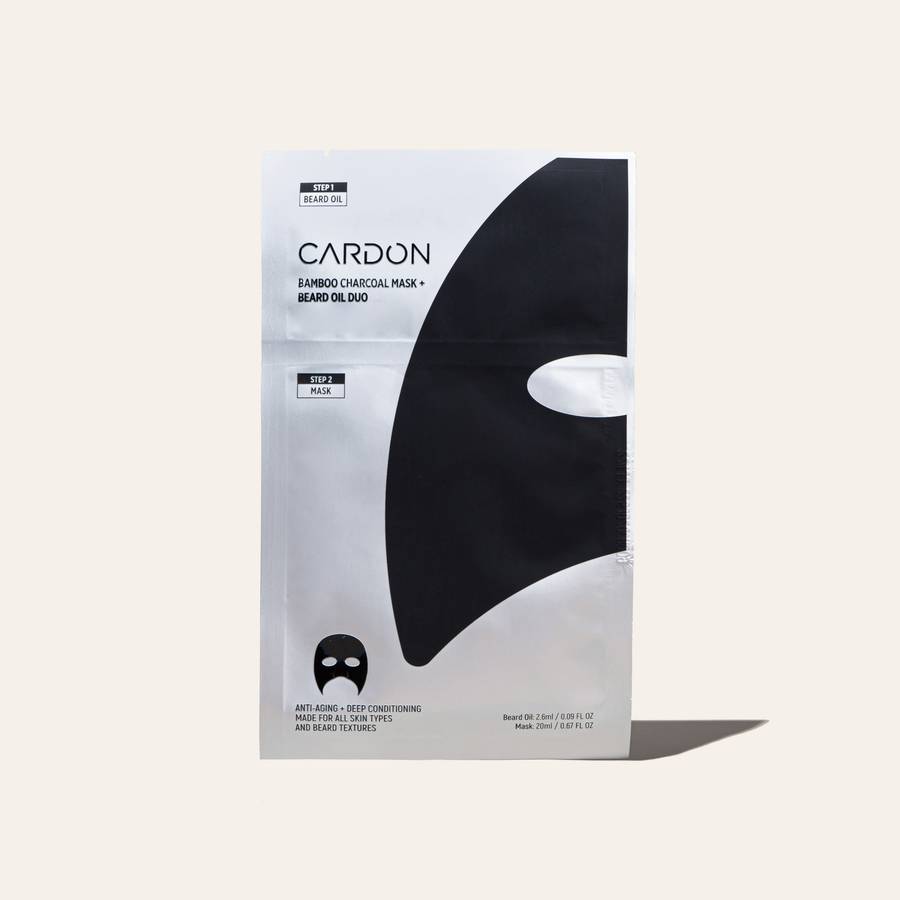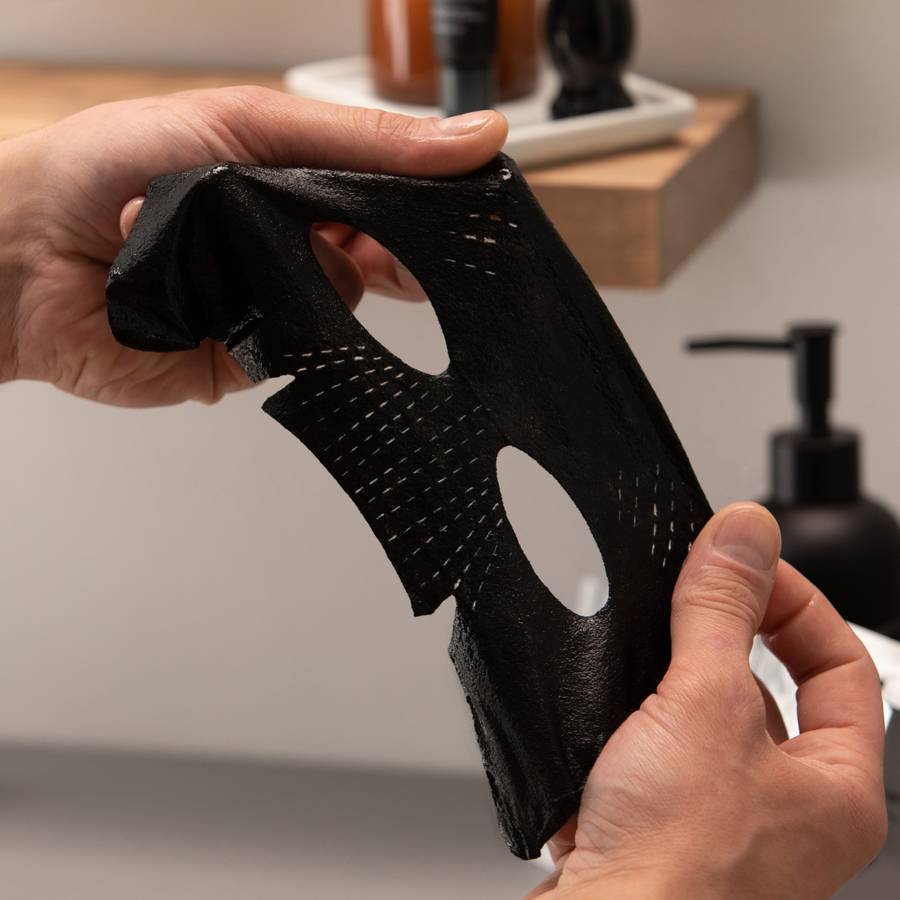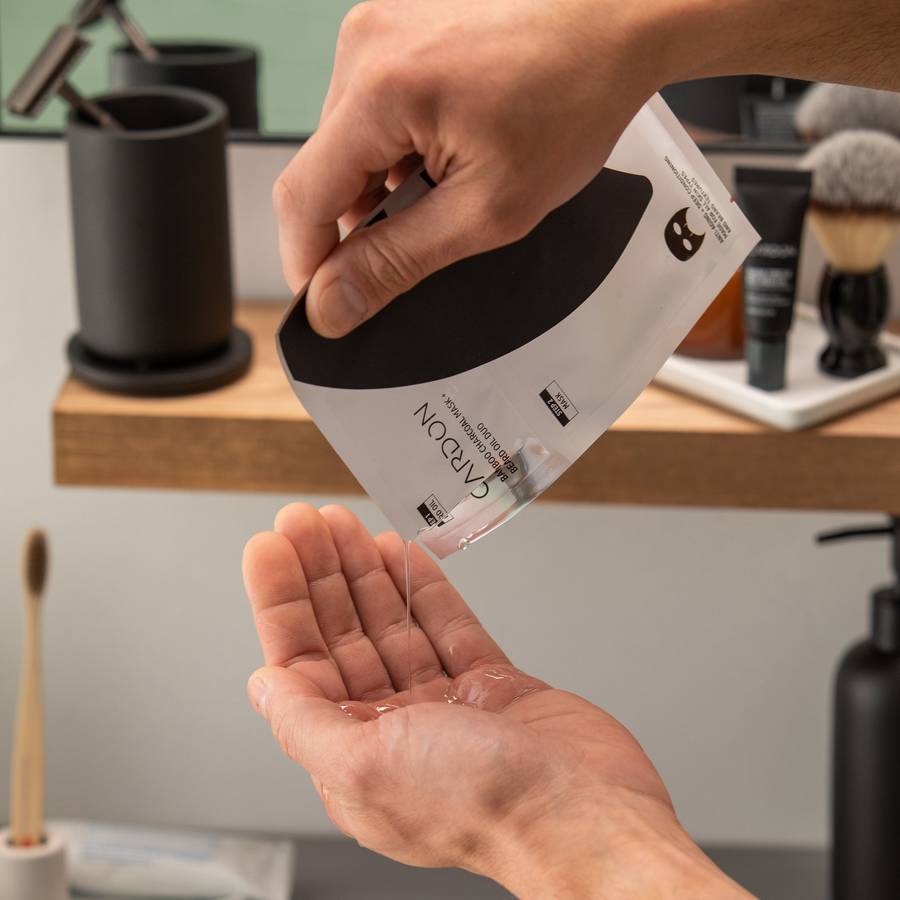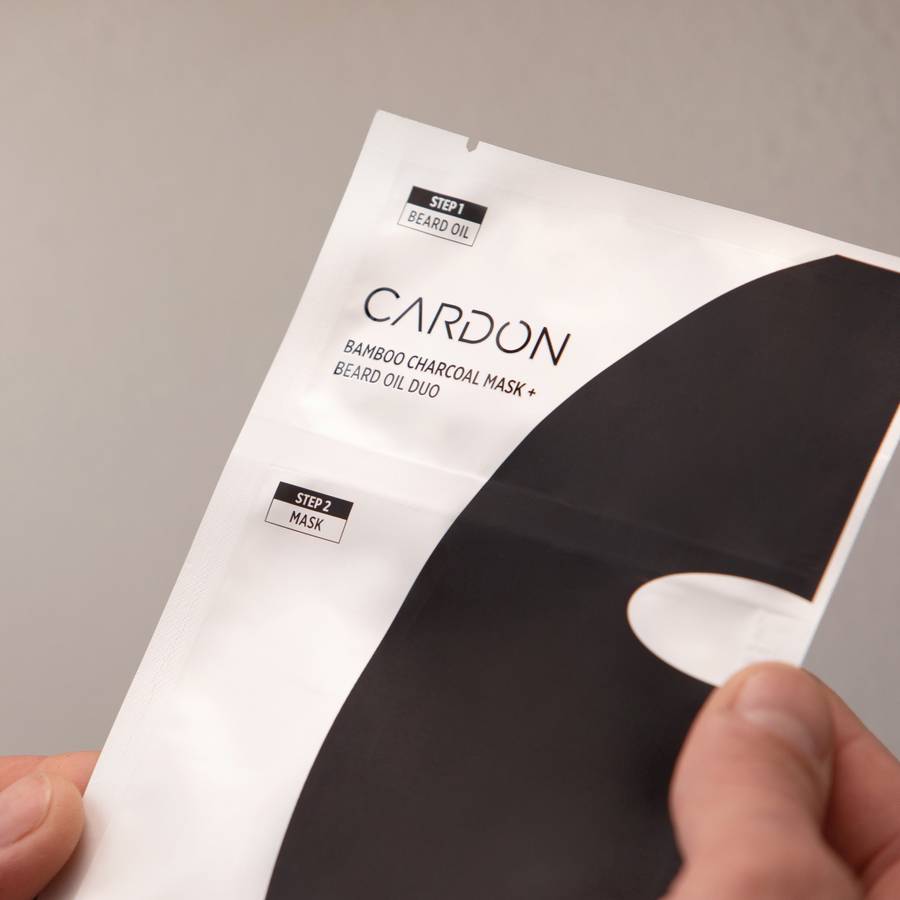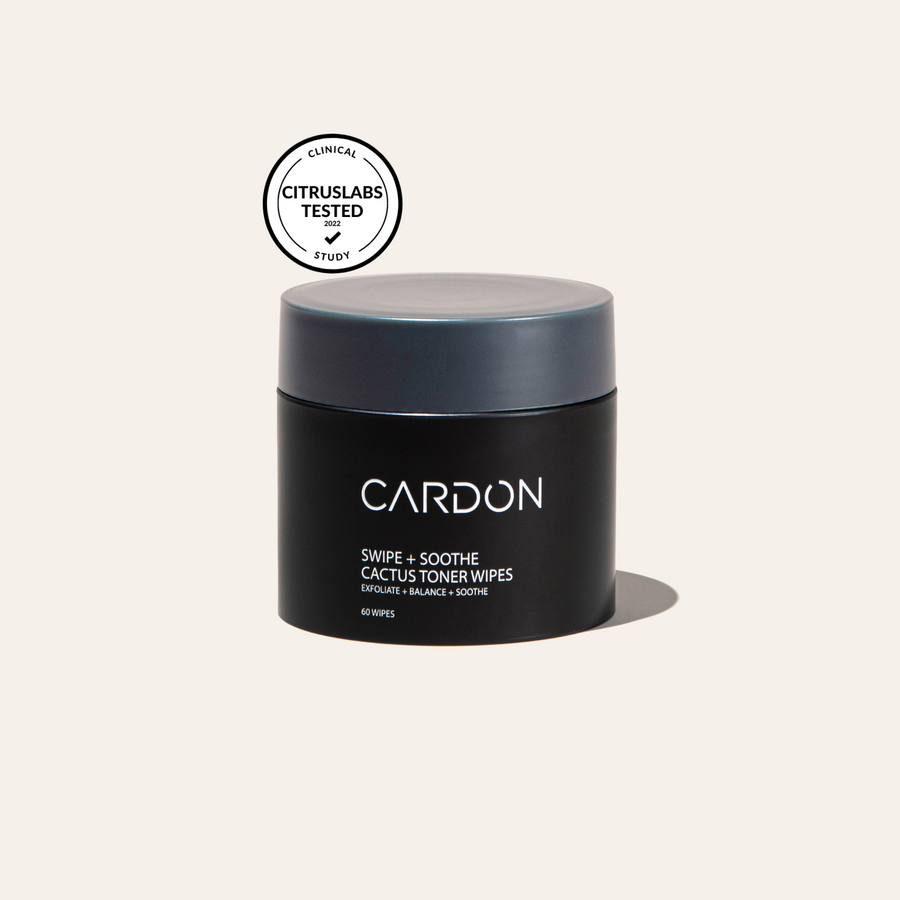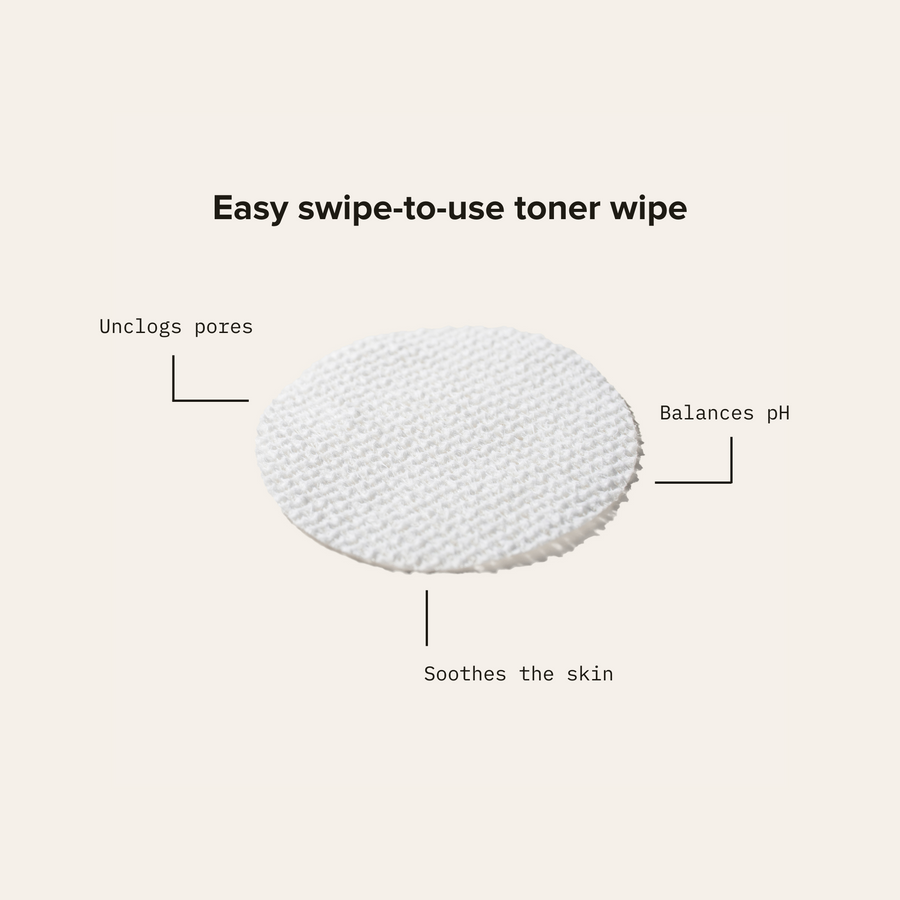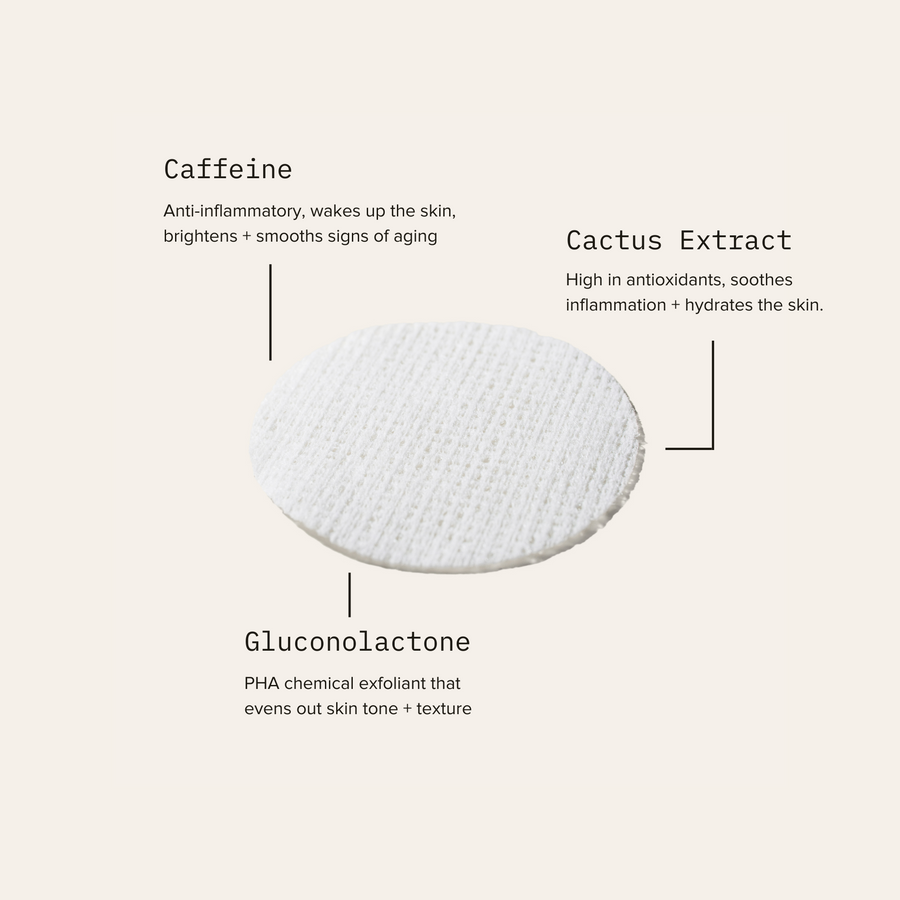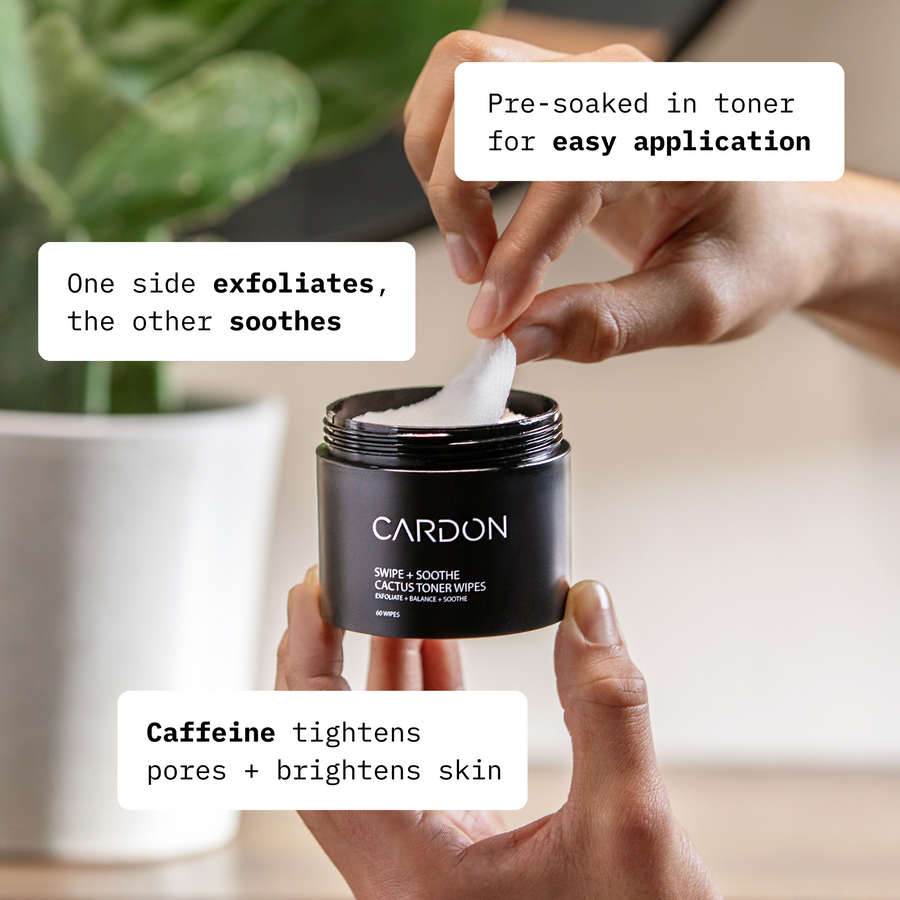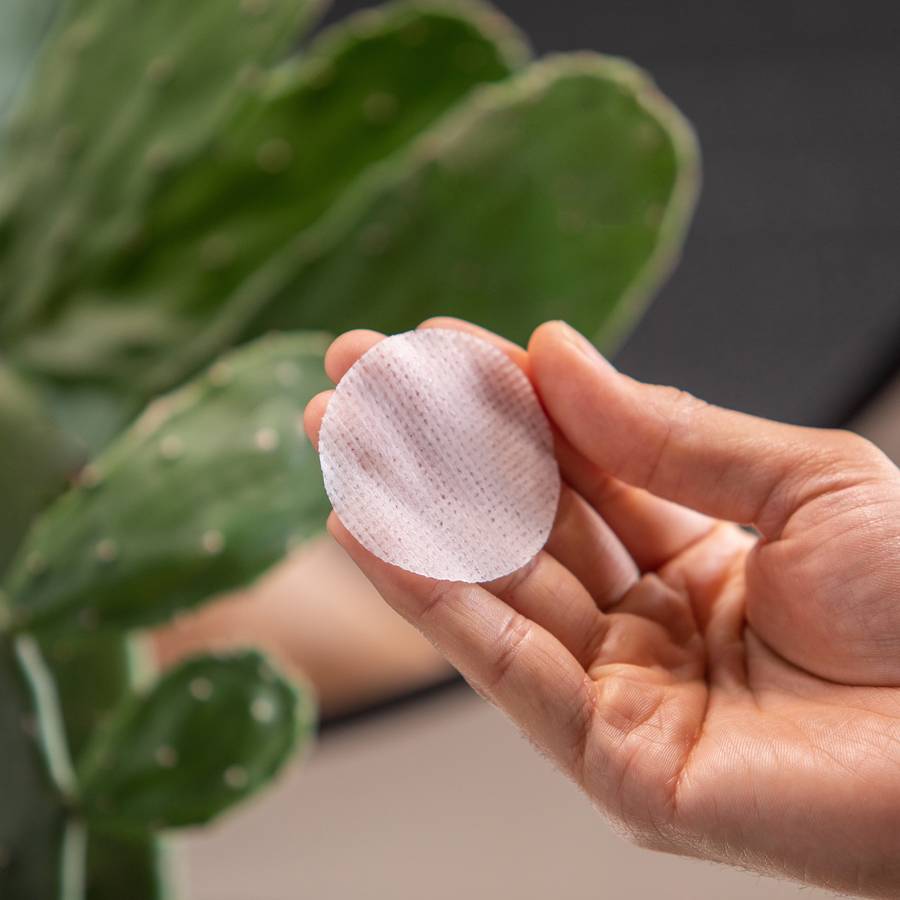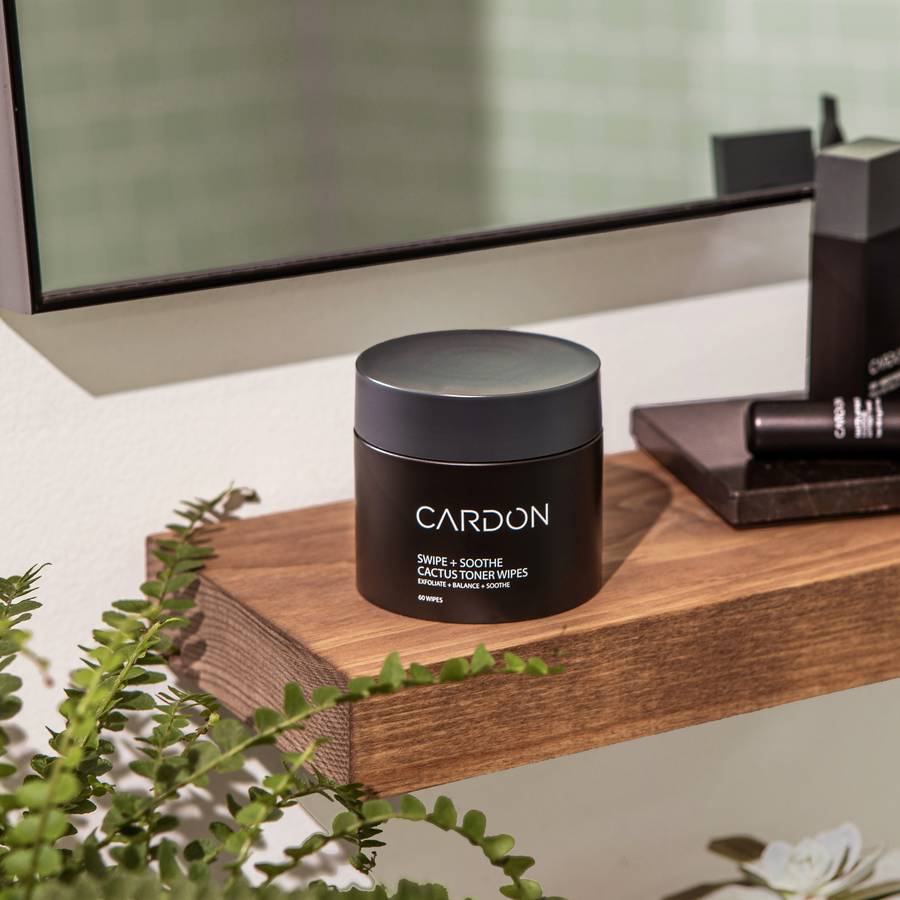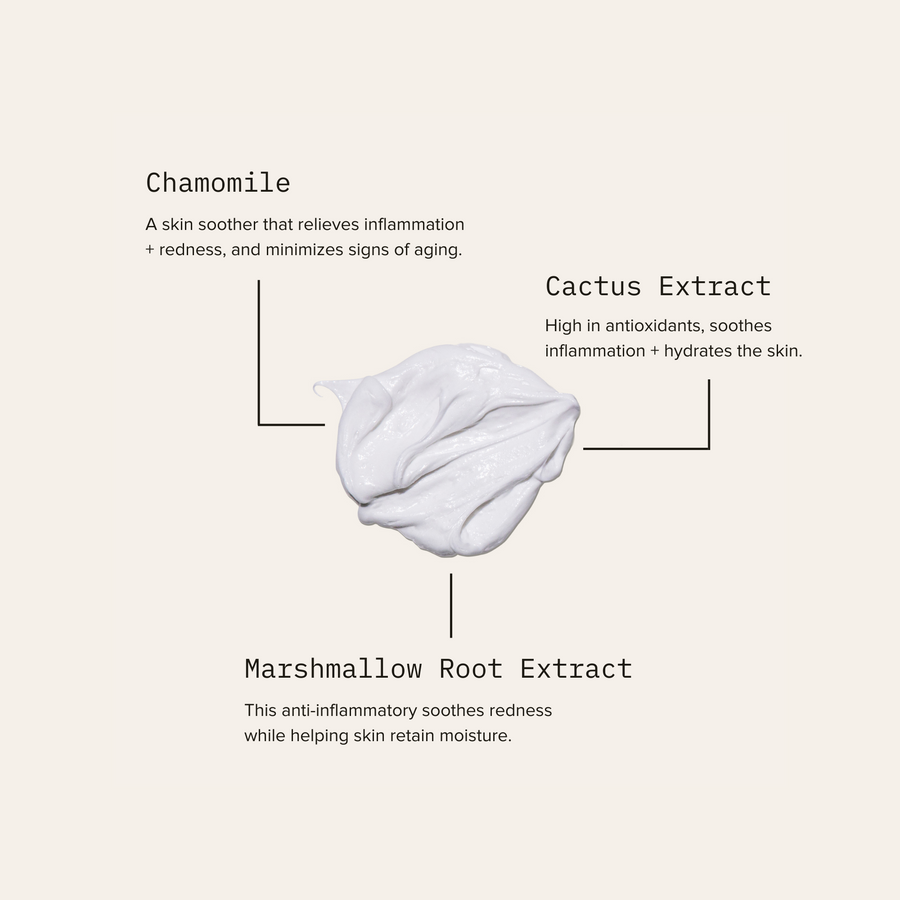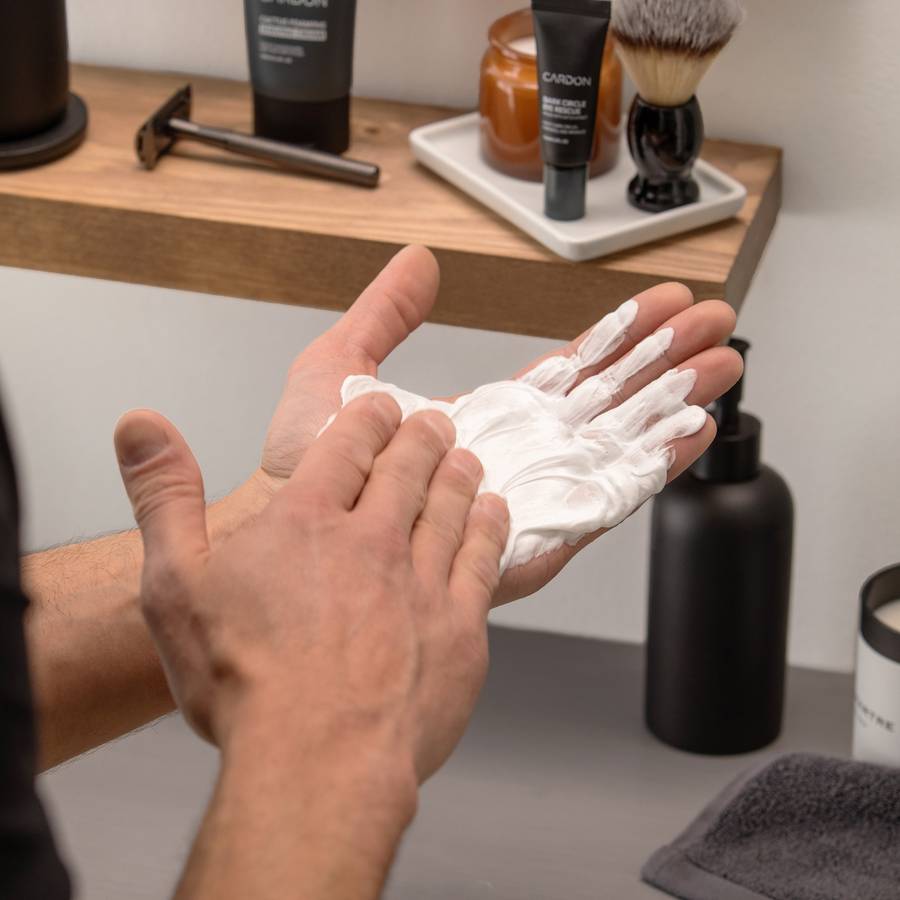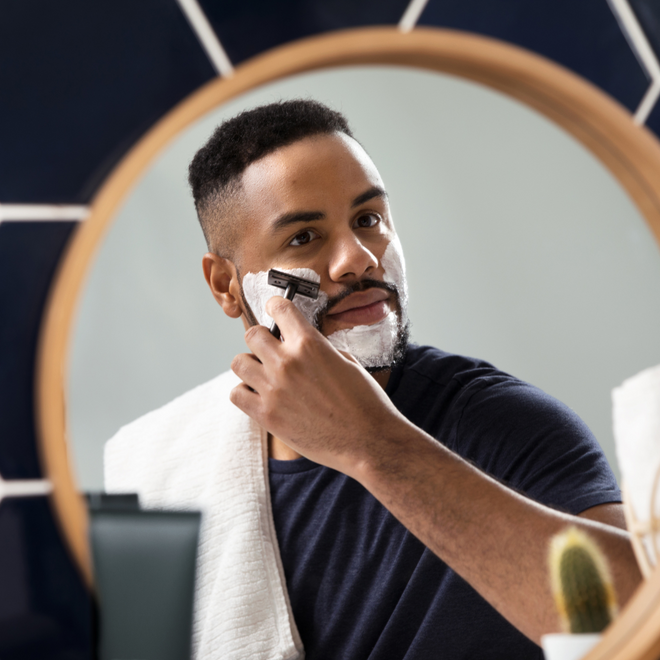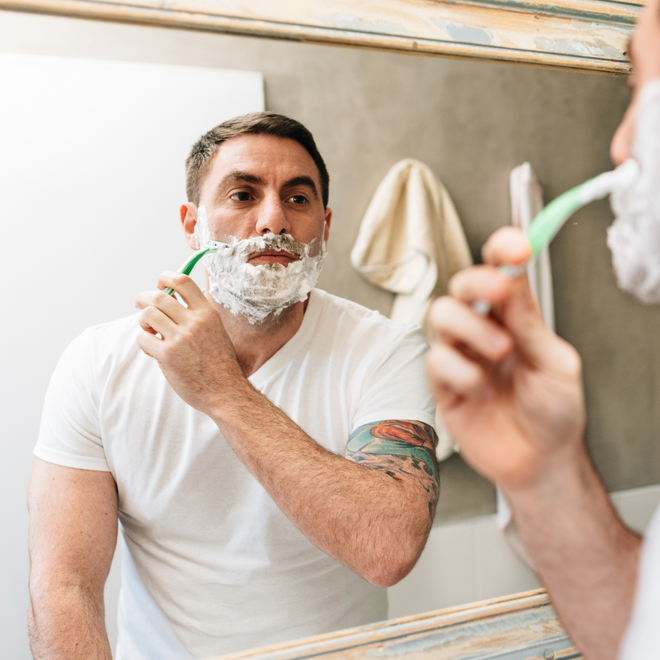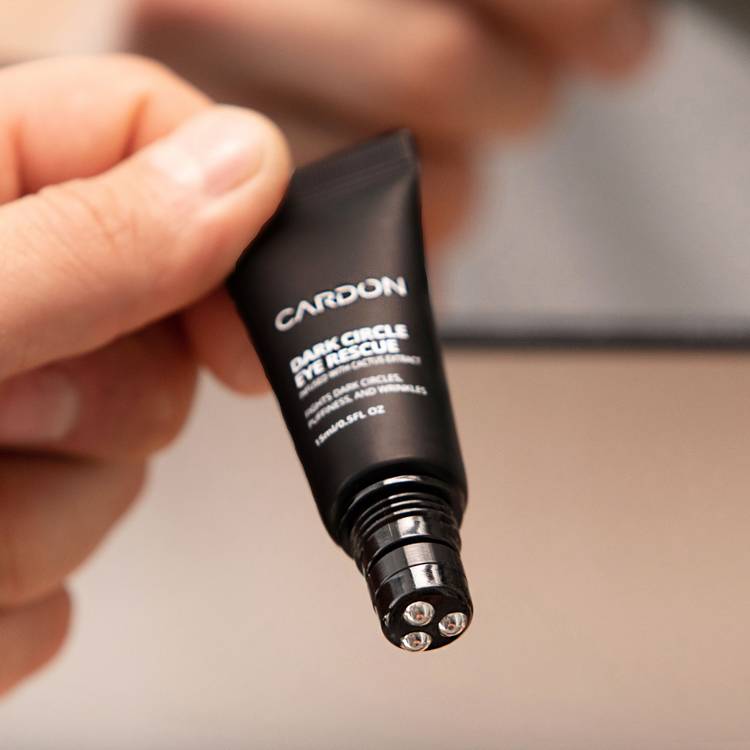How to Get Rid of Razor Burn
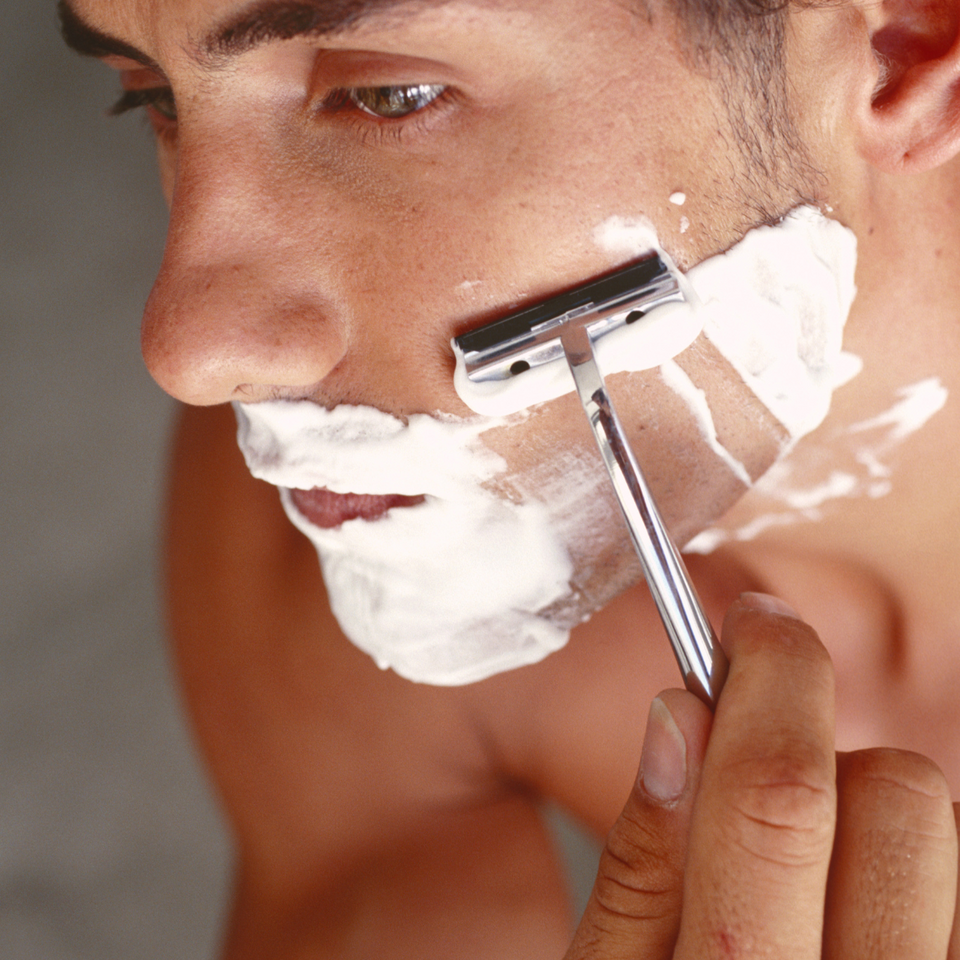
Most of us can shave as easily as we ride a bike. But, in the same way that it’s possible to topple off a bicycle and skin your knees, even the most veteran shavers can come up with a sour patch of razor burn. Rookie shavers are especially prone (hey, we’ve all been there!), and can be assured that it is possible to prevent razor burn. It’s important to know how to do that, and ditto for knowing how to get rid of razor burn if and when it does pop up.
When you think about it, dragging a razor blade across your skin is a pretty crazy idea—not to mention, some of these cartridge razors have 5 or 6 blades on their heads, and with each stroke you’re peeling away a few more skin cells each time. Whew. Again, at least most of us learn to master this process. But if you’re here looking for that solution, read on for our razor burn tips.
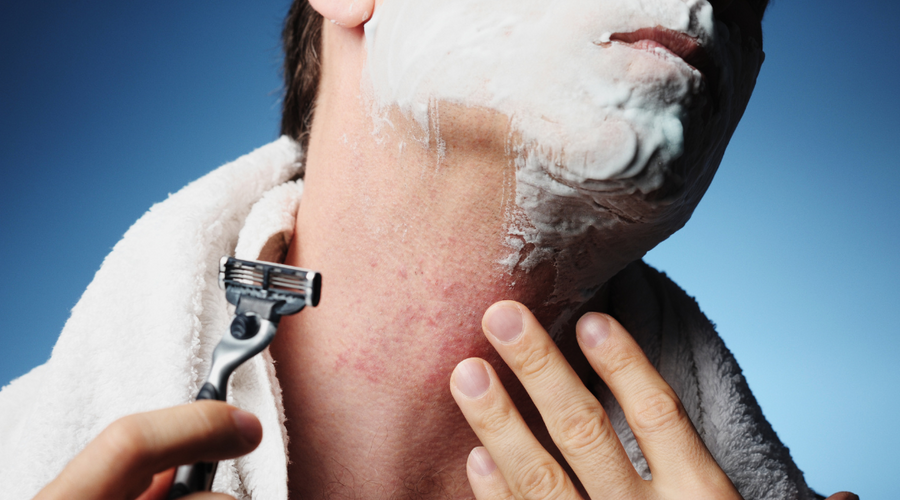
Razor Burn vs. Razor Bumps: What’s the Difference?
It’s easy to confuse razor burn and razor bumps, since both plague the skin after you shave. The key difference is that the bumps occur around a hair follicle, either because of an infection or because of ingrown hairs due to improper shaving techniques or curly hair patterns. Razor burn, on the other hand, is more of a surface issue. While it can manifest as clusters of bumps, it can also be an inflamed or red rash.
Razor bumps usually take a day or few to form, while razor burn is often immediate or within hours of the shave.
How to Prevent Razor Burn
Razor burn prevention really begins by understanding what causes of razor burn in the first place. Typically, you’ll experience razor burn because of some subpar aspect of your shave regimen. This can be because your razor blades are too dull (and thus are causing excessive razor drag across your skin), or perhaps because you shaved too hastily and without properly preparing the skin for those sharp blades. Understandably, this is why dry shaving can frequently result in razor burn.
So with all of that in mind, here is how to prevent razor burn in the first place.
1. Replace blades frequently: It’s important to swap out blades after 6-8 uses, or after 2-3 weeks—whichever of those two things occurs first. This ensures that blades never get too dull, nor will they accumulate bacteria. Luckily, most companies make it inexpensive to replace blades, but be sure to order enough new ones so that you never run out.
2. Store blades correctly between uses: Try to get blade protectors or a case for your razors, so that the blades aren’t interacting with other items between uses. (Like, stored loose in your dopp kit, where they can rub against other items and compromise the even blades, or accumulate dust.) Secondly, make sure they are fully dried out before you do store them away—having dried them in a cool place, in an upright position—so that there is less chance for bacteria to accumulate.
3. Take it slow and steady: While your shave regimen doesn’t need to take 20 minutes, it also shouldn’t take 20 seconds. Make sure to commit 5 minutes or more to the process, at the very least. Above all, please just don’t dry shave—ouch! And hey, if you find yourself in a hurry, maybe you should invest in an electric razor and just run that over your face for 3–60 seconds every day. It’ll keep you looking fresh minus the serious risk for razor burn. (Though a nice pre-shave oil and post-shave treatment will still be useful.)
Read more about the optimal shave regimen for men, to cover all of the necessary bases.
4. Make confident, short strokes: Try to avoid going over the same patch of skin multiple times (which is another argument for keeping fresh, sharp blades). You can do this by taking short strokes and rinsing the blades between each one. Don’t let too much debris buildup in the blades, because this will only increase razor drag.
5. Reconsider the number of blades you’re using: While there are a lot of reputable brands making cartridge razors with 5 or 6 blades, it does beg the question: Why? The safety razor was the gold standard until 1971, so why did we need to reinvent that wheel? We’re not suggesting everyone switch to a single-blade safety razor, but we are saying that there are a lot of terrific cartridge razors with just 3 or 4 blades, too. The fewer blades you have running over your skin, the less chances for irritation.
How to Treat Razor Burn
If you’re already dealing with post-shave redness and need a razor burn treatment, then there are a few optimal solutions to ensure a quick recovery.
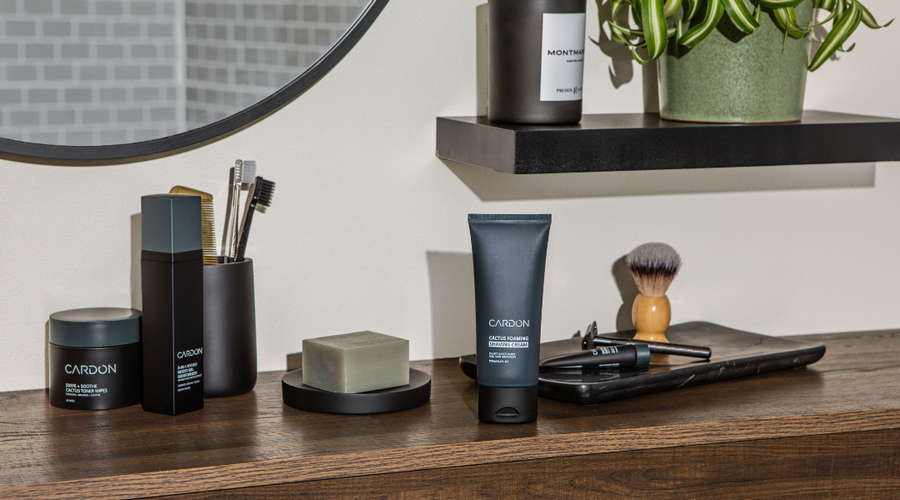
1. Prioritize fewer products (and soothing ones at that): Now is definitely not the time to be applying any harsh ingredients onto your skin. Simplify your skincare regimen while the skin recovers, prioritizing gentle, soothing cleansers and cushioning facial moisturizers. Cardon uses cactus extract in all of its formulas, which soothes inflammation and boosts hydration levels in the skin (which is so important when your skin barrier is compromised during razor burn). Our face wash also gently purifies and nourishes skin with clay, while our two moisturizers cushion skin with ingredients like turmeric (an anti-inflammatory, found in our SPF 30 daytime hydrator) as well as rosehip oil (with superb healing properties, as found in our cooling gel moisturizer).
Consider it an order to apply a soothing moisturizer to your skin multiple times a day, while you recover. This will not only cool and comfort, but will also serve as a much-needed additional line of defense against moisture loss and any environmental threats (like city pollution and other toxins), given that your skin needs all the extra help it can get right now.
2. Avoid the sun and more shaving: While an SPF moisturizer is important to wear every single day, it’s smart to fully avoid sun exposure when you have irritated, razor-burnt skin. The last thing you need is for those harmful UV rays to further fry your skin while it’s on the road to recovery. The same goes for re-injury through more shaving. So avoid using any razors for those few days—which hopefully was obvious already.
3. Apply a cold compress: One way to quickly treat razor burn after it springs up is with a cool compress, to prevent increased inflammation and to (hopefully) cut the recovery time. It’s never too late to lather on an anti-inflammatory post-shave product, aloe vera gel, or cactus extract-packed gel moisturizer to also slow the spread of redness.
4. Do a DIY oatmeal mask: You can apply a mask made out of colloidal oatmeal to the area, and let it set on the skin for 10-20 minutes as a form of relief. The oatmeal helps trap moisture inside the skin, improves its retention, and expedites recovery. Do this once a day until the skin improves. If you have regular oatmeal, jst grind it up in a small flour and make a paste. Be sure it’s room temperature or cool when you apply it—and definitely not hot.
5. Visit the dermatologist or pharmacist: While there are some OTC hydrocortisone treatments and numerous other DIY remedies, it’s important to have an expert examine your situation and “prescribe” something suitable for the specific case, as opposed to you applying something aggressive or for far too long. So, while it may seem extreme to visit a dermatologist for razor burn—but in severe cases, we do recommend it—you could probably just ask a pharmacist for a quick assessment and their top recommendation for the matter. You’ll probably end up with a topical anti-inflammatory (like a steroid cream) which will hopefully put an end to the redness and pain for once and for all.
Shop the collection
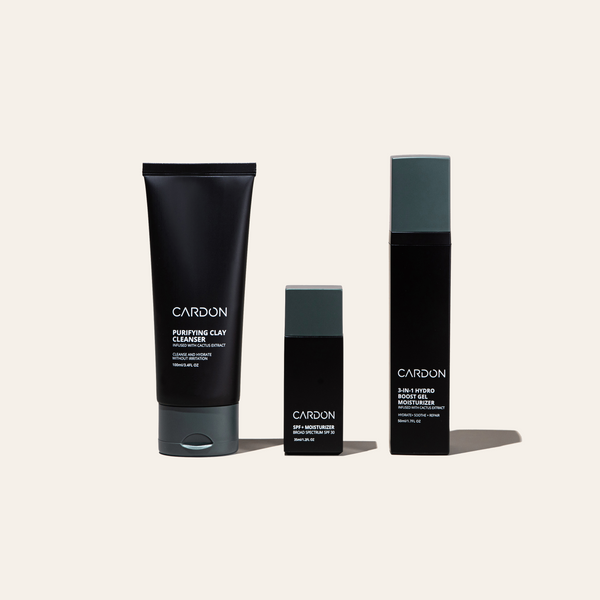
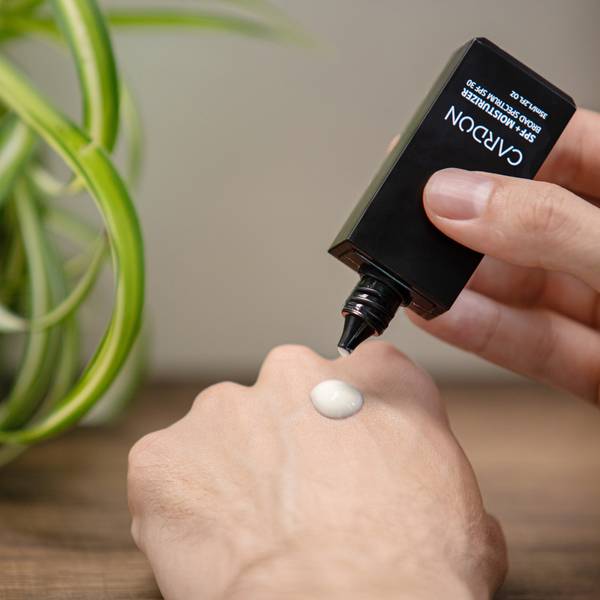
Beginners
Essentials Skincare Set
good for:
Everything you need, nothing you don’t—the Essentials Set is your skincare starter pack. Just cleanse, moisturize, and protect. We took the guesswork out of developing a skincare routine. This is all you need for everyday skin health.
Includes Steps:
- 01 Purifying Clay Cleanser
- 02 Daily SPF + Moisturizer
- 03 Hydro Boost Gel Moisturizer
Never go empty! Subscribe + Save 15%
Essentials Skincare Set
good for:
Everything you need, nothing you don’t—the Essentials Set is your skincare starter pack. Just cleanse, moisturize, and protect. We took the guesswork out of developing a skincare routine. This is all you need for everyday skin health.
Includes Steps:
- 01 Purifying Clay Cleanser
- 02 Daily SPF + Moisturizer
- 03 Hydro Boost Gel Moisturizer
Never go empty! Subscribe + Save 15%

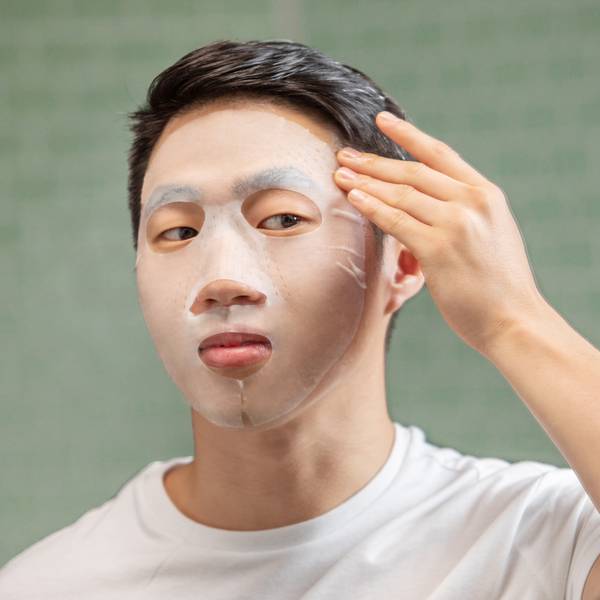
Dry Skin Set
good for:
Skin feeling a bit thirsty? The Dry Skin Set was crafted specifically for those with a dry skin type.
If you deal with flakiness, dull complexion, visible fine lines, red patches, or any combination of the above, this set was made for you. This is all you need to hydrate your skin—and keep it hydrated.
Includes Steps:
- 01
- 02 Dark Circle Eye Rescue
- 03 Daily SPF + Moisturizer
- 04 Hydro Boost Gel Moisturizer
- 05 Cactus Soothing Face Mask
Never go empty! Subscribe + Save 15%
Dry Skin Set
good for:
Skin feeling a bit thirsty? The Dry Skin Set was crafted specifically for those with a dry skin type.
If you deal with flakiness, dull complexion, visible fine lines, red patches, or any combination of the above, this set was made for you. This is all you need to hydrate your skin—and keep it hydrated.
Includes Steps:
- 01
- 02 Dark Circle Eye Rescue
- 03 Daily SPF + Moisturizer
- 04 Hydro Boost Gel Moisturizer
- 05 Cactus Soothing Face Mask
Never go empty! Subscribe + Save 15%
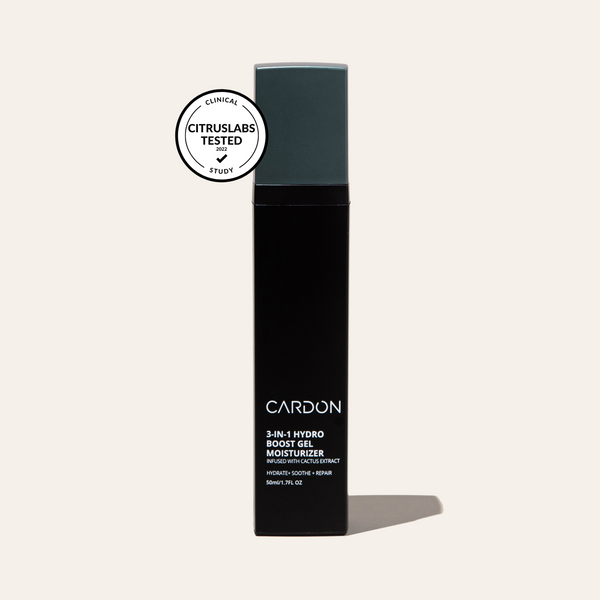

Hydro Boost Gel Moisturizer
good for:
Like a night cap for your skin, our Hydro Boost Gel Moisturizer is the ideal way to finish your evening.
This 3-in-1 gel moisturizer uses Cactus Extract and Rosehip Oil to put in the work while you snooze—hydrating, soothing, and repairing your skin all night long.
“This easily became part of my nightly routine. I've started to notice my face looking healthier and smoother. As a 32 y/o, you start to notice wrinkles creeping in, this helps me keep them at bay.” - Andrew S.
Hydro Boost Gel Moisturizer
good for:
Like a night cap for your skin, our Hydro Boost Gel Moisturizer is the ideal way to finish your evening.
This 3-in-1 gel moisturizer uses Cactus Extract and Rosehip Oil to put in the work while you snooze—hydrating, soothing, and repairing your skin all night long.
“This easily became part of my nightly routine. I've started to notice my face looking healthier and smoother. As a 32 y/o, you start to notice wrinkles creeping in, this helps me keep them at bay.” - Andrew S.

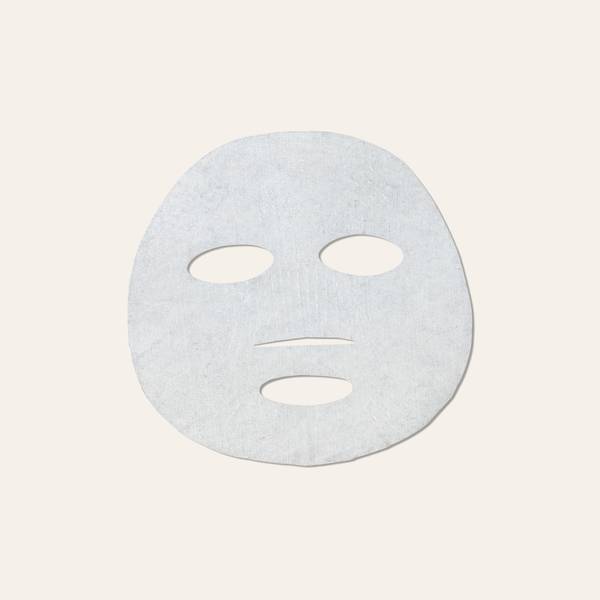
Cactus Soothing Face Mask
good for:
Everyone deserves some self-care time—may we recommend Cactus Soothing Face Mask and chill?
This immediate hydration boost is supercharged with healing ingredients like Cactus Extract and Cica to soothe redness and irritation while reducing fine lines. Perfect for a post-shave treatment or whenever you need a moment for you.
“Stress and late nights working have left my skin looking a bit rough, but this mask was perfect for some at-home spa relaxation. My skin definitely looks a lot more moisturized and refreshed.” - Melody C.
Cactus Soothing Face Mask
good for:
Everyone deserves some self-care time—may we recommend Cactus Soothing Face Mask and chill?
This immediate hydration boost is supercharged with healing ingredients like Cactus Extract and Cica to soothe redness and irritation while reducing fine lines. Perfect for a post-shave treatment or whenever you need a moment for you.
“Stress and late nights working have left my skin looking a bit rough, but this mask was perfect for some at-home spa relaxation. My skin definitely looks a lot more moisturized and refreshed.” - Melody C.
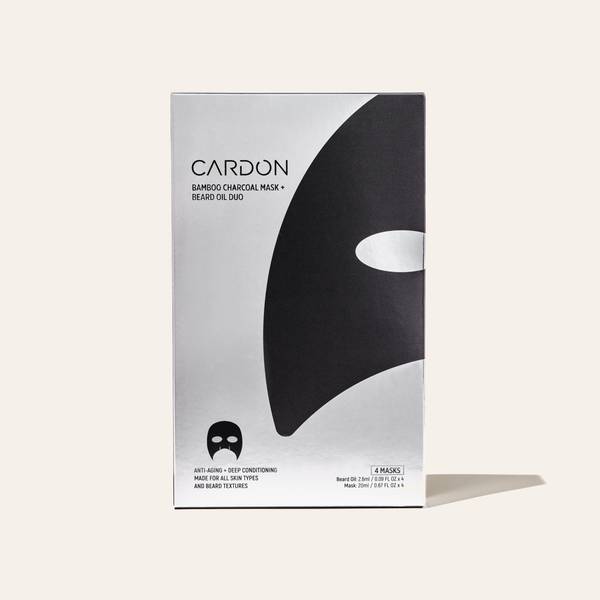
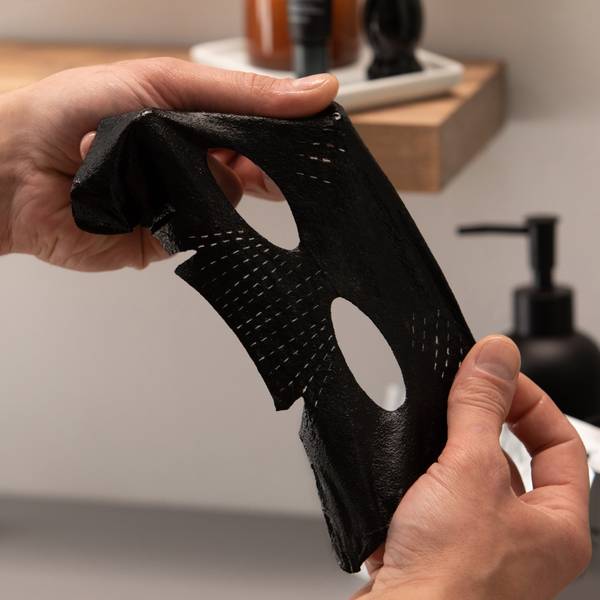
GIFT
Bamboo Charcoal Sheet Mask + Beard Oil
good for:
Often imitated, never duplicated, this innovative sheet mask is the first of its kind and an Ask Men Grooming award winner in the Best Sheet Mask category!
Half mask, half beard treatment, the Bamboo Charcoal Sheet Mask + Beard Oil gives each section of skin (and beard) just what it needs: A detoxifying, hydrating charcoal-infused mask for your skin and a nourishing beard oil blend for the ultimate beard care. Plus, the mask is designed with expandable nose slits to fit any face size and shape.
“I really enjoyed this face mask from Cardon. The beard oil applies easily and the half mask for your cheeks, nose, and forehead fits well and stays in place. My skin looks and feels great after removing the mask. Well done, Cardon!” - Tyler S.
Bamboo Charcoal Sheet Mask + Beard Oil
good for:
Often imitated, never duplicated, this innovative sheet mask is the first of its kind and an Ask Men Grooming award winner in the Best Sheet Mask category!
Half mask, half beard treatment, the Bamboo Charcoal Sheet Mask + Beard Oil gives each section of skin (and beard) just what it needs: A detoxifying, hydrating charcoal-infused mask for your skin and a nourishing beard oil blend for the ultimate beard care. Plus, the mask is designed with expandable nose slits to fit any face size and shape.
“I really enjoyed this face mask from Cardon. The beard oil applies easily and the half mask for your cheeks, nose, and forehead fits well and stays in place. My skin looks and feels great after removing the mask. Well done, Cardon!” - Tyler S.
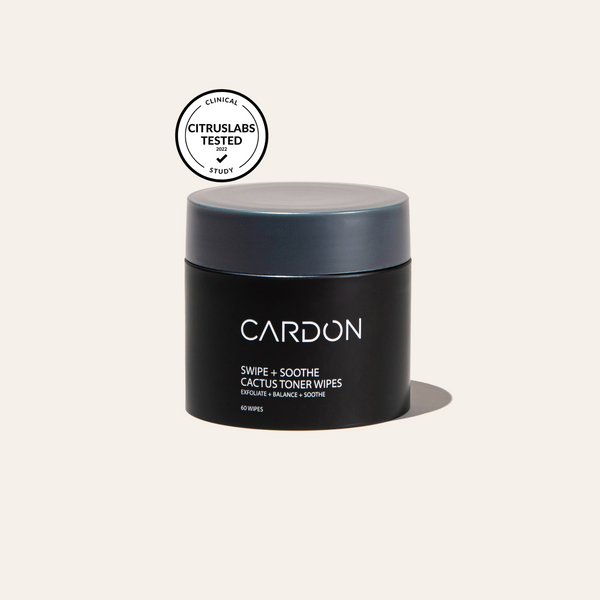
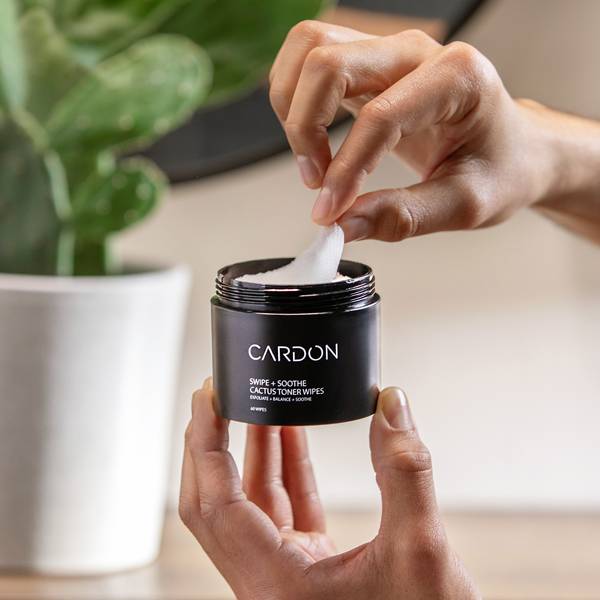
Exfoliating Facial Toner Wipes
good for:
After a long, busy day you just want to sit back, relax, and crack open—our biodegradable Exfoliating Facial Toner Wipes.
Wipe the stress and grime away with our Exfoliating Facial Toner Wipes, which use PHAs and caffeine to unclog pores, balance pH, and soothe the skin all in one easy step. No water needed.
Due to demand, this product is temporarily out of stock. Click "Notify Me" below to be the first to know when it's back!
Exfoliating Facial Toner Wipes
good for:
After a long, busy day you just want to sit back, relax, and crack open—our biodegradable Exfoliating Facial Toner Wipes.
Wipe the stress and grime away with our Exfoliating Facial Toner Wipes, which use PHAs and caffeine to unclog pores, balance pH, and soothe the skin all in one easy step. No water needed.
Due to demand, this product is temporarily out of stock. Click "Notify Me" below to be the first to know when it's back!

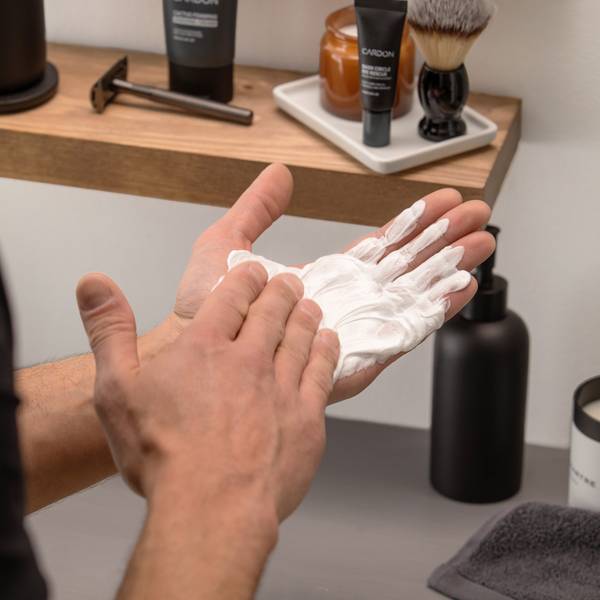
Cactus Foaming Shaving Cream
good for:
This bathroom cabinet staple is a cut above the rest. The Cactus Foaming Shaving Cream for men delivers a close, comfortable shave every time—without having to worry about nicks, razor burns, irritation, and ingrowns.
Our rich foam uses Cactus Extract and Chamomile to create a cushion-like layer to soothe the skin. Plus, you’ll shave some time since this also doubles as a face cleanser.
Due to demand, this product is temporarily out of stock. Click "Notify Me" below to be the first to know when it's back!
Cactus Foaming Shaving Cream
good for:
This bathroom cabinet staple is a cut above the rest. The Cactus Foaming Shaving Cream for men delivers a close, comfortable shave every time—without having to worry about nicks, razor burns, irritation, and ingrowns.
Our rich foam uses Cactus Extract and Chamomile to create a cushion-like layer to soothe the skin. Plus, you’ll shave some time since this also doubles as a face cleanser.
Due to demand, this product is temporarily out of stock. Click "Notify Me" below to be the first to know when it's back!
Cardon Products Are
Easy to Use
We never create two products when we can achieve the same results with one. Cardon products are designed to be easy to use every day.
Backed By Korean Innovation
Korean R&D is two decades ahead of the rest of the world. Cardon products use the highest quality, most effective ingredients out there.
Non-Toxic
Finally, an ingredient label you can feel good about. Every ingredient in Cardon products is good for your skin, and easy on the mind.
